Choose your language
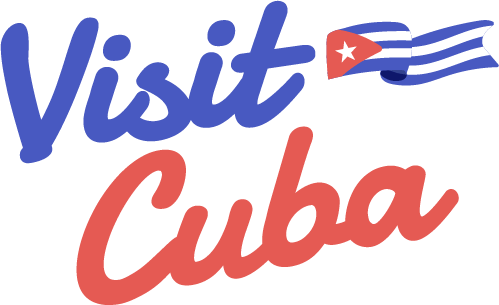

Welcome to Cuba
More than you imagined
Plan your holiday to Cuba
Cuba Up-Close
Six Essential Tips for Your Trip to Cuba 2022
From alternative accommodation to bypassing the restrictive internet in Cuba, check out these six essential tips for your trip to Cuba.
Cuba up-close
When is the best time to visit Cuba?
Planning a visit to Cuba? The island offers sunny skies and activities year-round. Learn more about its seasons, weather, and cultural calendar.
Is it safe to travel to Cuba?
Here are some of the best safety tips to follow as you enjoy your trip, and use public transportation in Cuba.
Greatest Waterfalls in Cuba
Imagine finding yourself in Cuba, surrounded by an exuberant natural environment - where the vivacious green mountains stretch out into a splendid blue sky - while the fresh Caribbean seabreeze brightens your face. And on this tropical voyage, you discover a land of waterfalls on every corner of the island.
El Nicho waterfall, Sierra de Escambray
Photo: Shutterstock
Looking for some cool things to do?
See cuban nature up-close at sierra del rosario.
Reconnect with nature at Cuba's Sierra del Rosario nature reserve.
Fábrica de Arte Cubano: A Unique Experience for Art Lovers
Havana houses one of Time Magazine’s Best 100 experiences: the
Havana’s National Museum of Fine Arts
Your essential guide to one of Cuba’s most fascinating cultural
Explore Varahicacos Reserve in Varadero
Indulge in the landscape of Cuba at Varahicacos Ecological Reserve,
Is It Safe to Travel to Cuba?
Planning to travel to Cuba this season? Here are some
Five of the Best Beaches in Cuba
Discover the best Cuban beaches making a splash in the
Visit Chinatown in Havana
Visit the only Chinatown in Cuba, right in Central Havana,
Lesser Known Parts of Cuba to Discover This Year
Escape the crowds and Look further into the Cuban landscape
Tarará Beach – Havana’s Best Kept Secret
Tired of typical tourist spots? Get to know Tarará beach,
Where to Drink in Havana: Our Essential List of the Best Bars
Explore our essential list of the best bars in Cuba,
Top Four Jazz Clubs in Havana
Cuba’s capital has always enjoyed a lively jazz scene, and has produced legendary musicians. It’s time to visit Havana’s best jazz clubs!
La Zorra Y El Cuervo jazz club, Vedado, Havana
Photo: Alamy
Winter activities and tips!
History & Heritage
Visit the Museo de la Revolución
Wildlife & Nature
Ciénaga de Zapata
Castillo del Morro
Beaches & Islands
Hit the Beach at Tarará
Castillo del Morro: A Historical Fortress in Havana
Learn about the History of Cuba in the bay of
Ciénaga de Zapata: A Natural Cuban Treasure
Encounter the endemic flora and fauna of Matanzas Cuba, and
Visit the Museo de la Revolución, and Relive the Fight for Cuba
Havana’s Museo de la Revolución offers a thorough look at
The Cuban Cigar: Everything You’ll need to know
Learn about the curious and mysterious history of the Cuban cigar, how a Habano is made, and where you can buy quality tobacco like Cohiba cigars.
A Cuban woman with a cigar, Havana
Check Us out on Instagram
@govisitcuba, subscribe to our newsletter.
Get more travel inspiration, tips and exclusive offers sent straight to your inbox
I would like to get Visit Cuba newsletters in my inbox
Paradise for Your Inbox
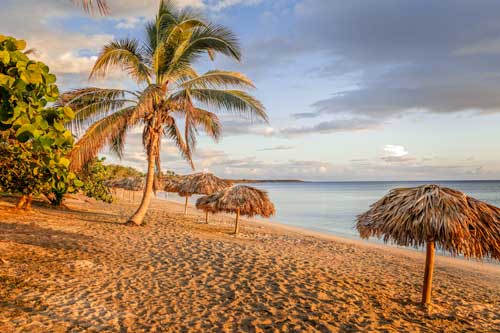
20 things to know before visiting Cuba

Jan 5, 2024 • 8 min read
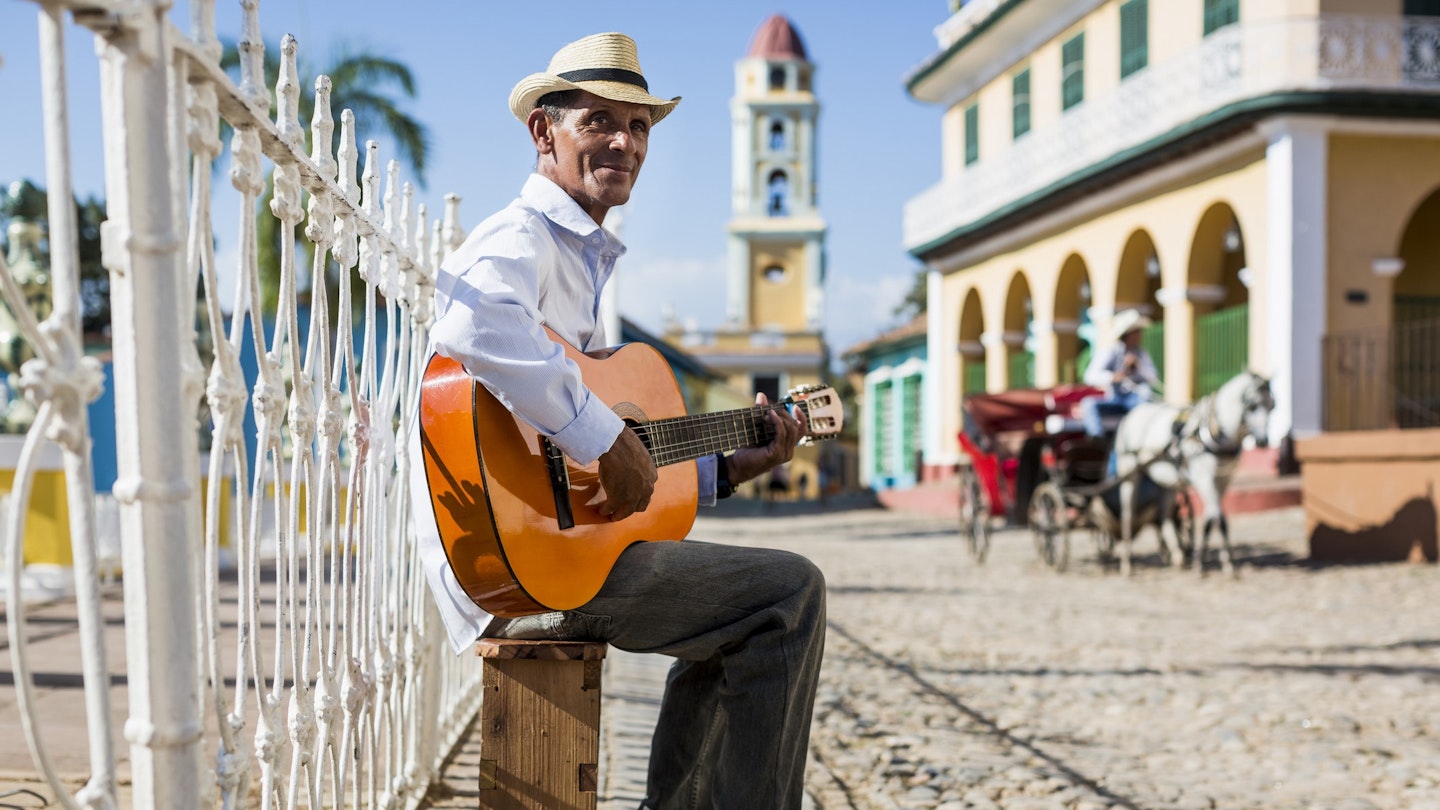
Be ready for your visit to Cuba with these top tips on what to expect © Westend61 / Getty Images
To a first-time traveler, Cuba can seem like a confusing jigsaw puzzle, particularly if you’re breaking free of the resorts and traveling around on your own.
The Spanish spoken here is fast and hard to decipher, many streets have two different names and the country’s fickle and highly complicated monetary situation could fill its own guidebook. Yet the country’s pleasures are well worth the research you should do before you set off.
To help you be prepared, here is everything you need to know before planning a trip to Cuba.
1. Double-check your insurance
You are required to have medical insurance to visit Cuba and will need to bring digital or printed proof of your policy. Random checks are made at the airport. If you arrive without insurance, you’ll be asked to buy a Cuban policy at the airport for US$30.
2. Fill out your passenger information in advance
Cuba uses an online form called D’Viajeros to gather traveler information, including immigration and health data, in advance of travel. Fill out the form digitally up to 72 hours before your arrival in Cuba.
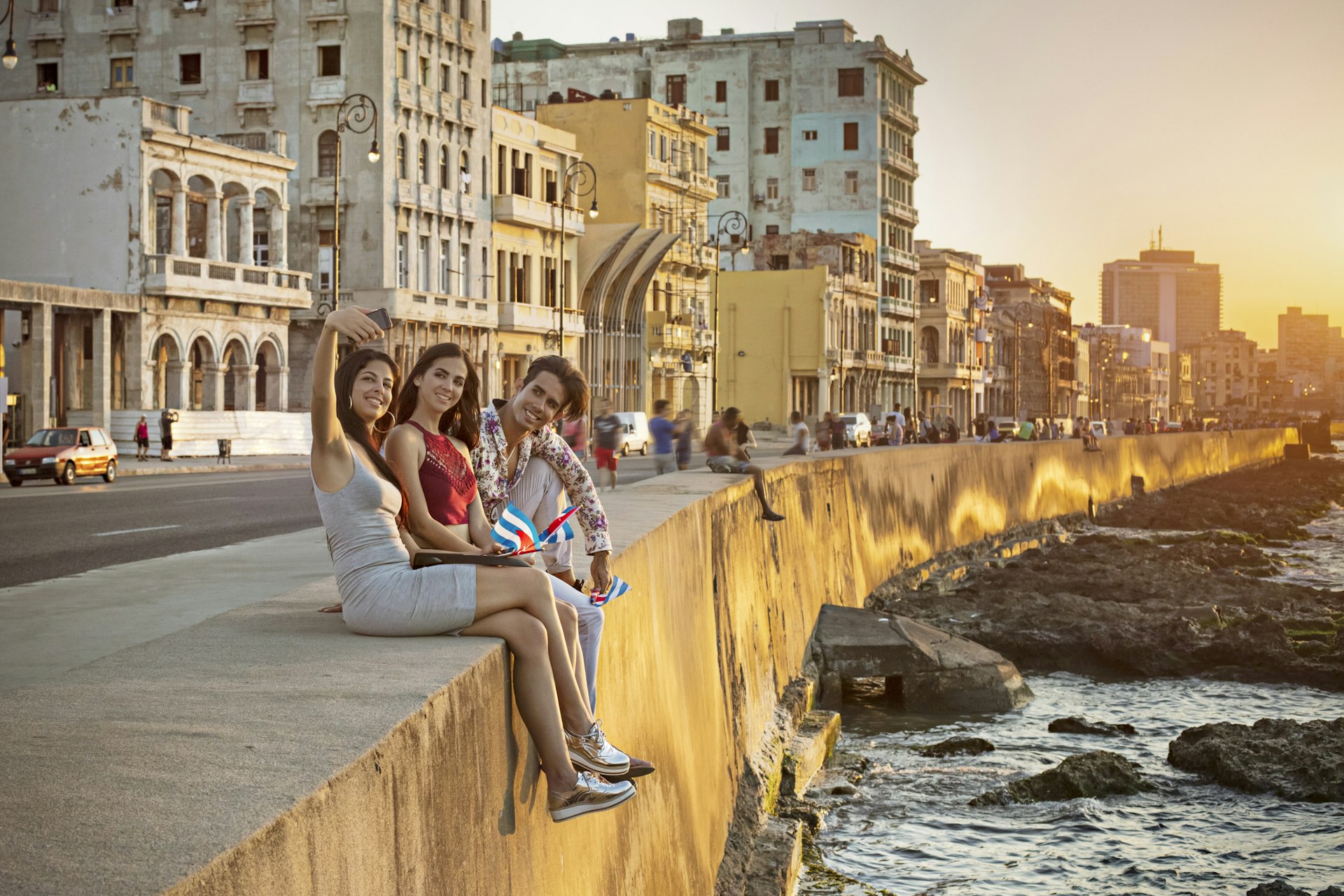
3. Every visitor needs a tourist card
To enter Cuba, all visitors need to present a completed tourist card . It’s usually available through your airline (ask when booking) and included in the price of your ticket.
If not, you can purchase one through a Cuban travel agency. Costs range from US$50 to US$85. Citizens of 20 African and Asian countries require a formal visa to enter Cuba. Check the situation for your country before booking.
4. Cash and currency: it’s complicated!
Money in Cuba is confusing, even to Cubans . Since the country abolished convertibles (CUC) in January 2021 and took the US dollar out of circulation in June 2021, there has been massive inflation and the emergence of a rampant black market. The knock-on effect is a bewildering dual economy.
The official currency of Cuba is the Cuban peso (CUP), but foreign currencies are also widely accepted, especially by private businesses who need hard cash to buy non-rationed goods in MLC (freely convertible currency) shops.
State-run enterprises and banks use official exchange rates. However, the prices of the superior services offered by private businesses generally reflect black market exchange rates.
Hence a main dish in a private restaurant in Havana will cost around CUP$500 (US$21). That’s an expensive meal if you’re paying in pesos bought from a Cuban bank.
However, most private restaurants will also accept payment in euros using a more favorable exchange rate. Some will even have a separate menu with prices printed in euros.
When buying something from a private business – be it a restaurant, casa particular (private accommodation) or taxi service – it’s usually best to pay in a foreign currency. Always ask upfront what currencies they accept and what exchange rate they use for their published peso prices.
Euros is the most interchangeable currency and the one preferred by Cubans. You can also use and exchange Canadian dollars and pound sterling.
US dollars still circulate on the black market, but we don’t recommend bringing them. The best bet, when you arrive, is to keep most of your money in a foreign currency and only change small amounts into pesos for incidentals like museum entry, concert tickets and tips.
5. MLC is a currency with no cash form
The Moneda Libremente Convertible (MLC) is a currency approved by the Cuban government in 2020 that can be used in certain shops to buy higher-end goods.
The currency doesn’t exist as cash and its value is pegged with the US dollar. It’s used mainly by Cubans with special magnetic cards.
Tourists needn’t worry too much about MLC$, although prices will sometimes be displayed in the currency in state-run enterprises such as cigar shops or airport souvenir stores where you can pay with a non-US credit card.
6. Only some credit cards will work
Credit cards are increasingly popular in Cuba and in many state-run businesses are the preferred (and sometimes only) method of payment.
Despite promises made in the Obama era, credit cards linked to US banks are not accepted. Private businesses almost never have credit card machines, meaning your only option is cash.

7. Pack your favorite casual clothes – and men need a shirt
Dress in Cuba is casual, so you can leave your high heels and tux behind. The only real dress code is in cinemas, theaters and nightclubs, where male patrons are required to wear long trousers and shirts with sleeves or half-sleeves.
8. Cuban Spanish is fast and often informal
If you speak Spanish, you’ll find that Cubans mostly use the informal tú form of address, rather than usted . In the plural, ustedes is used over vosotros .
If you don’t know someone, it’s best to address them as señor or señora , though you’ll hear Cubans use all kinds of substitutes such as socio , hermano , papa , chica/o and asere .
9. Cuban cities are where the streets have two names
In most Cuban cities , the streets have two names: a contemporary one that is noted on maps and marked on street signs, and a pre-revolutionary one that is still used widely by the locals.
This can become confusing, especially when locals, unaware of the new street names, start giving out directions or addresses using the colloquial nomenclature. Always double-check addresses and, if possible, get two potential names for the street you’re looking for.
10. Understand the local art of queueing
Cubans have to endure a lot of long waits in boring queues, so they’ve invented a way of doing it that doesn’t involve standing in line. In a Cuban queue, you simply roll up at the bakery/clinic/visa office and yell out to the assembled masses, "Quien es último?" (Who’s last?).
Hopefully, someone in a 400m vicinity will answer your polite entreaty with the word, "yo" (me). That person is your yardstick. As long as they’re still around, feel free to go for a walk, sit in the lotus position or buy ice cream. When they get called up, be on your toes, you’re next!
11. Ask questions more than once
Thanks to heavy bureaucracy, answers to simple requests aren’t always straightforward – or even correct. Probe politely and ask at least five different people before you make important decisions.
12. Bring something to keep you warm on a cold bus journey
Cuba has a countrywide state-run bus service called Víazul that connects all of the main cities and some of the smaller towns. Prices are charged in MLC$ (the same rate as the US$) and tickets must be paid for with a credit card either in person or online.
A second service called Conectando, run by Cubanacán, also puts on buses in peak season along some of the more popular routes. Bring a sweater/jacket for long bus rides – the air-conditioning is akin to a chilly day in Vancouver.

13. Cuba is considered a safe place to travel
Cuba is one of the safest countries in the Americas in terms of violent crime. Pick-pocketing is more common but not rampant, and is mostly avoidable if you follow a few basic precautions: Wear a money belt, use safe boxes in hotel rooms and don’t flash your cash in public.
14. Solo female travelers report receiving unwanted attention
Solo female travelers report experiencing a good deal of unwanted attention, but it didn't necessarily spoil their enjoyment of traveling in Cuba.
There is a fine line between being open and friendly and harassment, and some men can cross that line by being overly familiar or asking too many personal questions. Learn some key phrases in Spanish that make it clear when you're not interested.
15. Beware of forgeries
Never change money with unlicensed traders on the streets. You run the risk of receiving estafas (forged notes).
16. Bring your own medicines
On one level, Cuba has a good health system (it invented and quickly distributed three COVID-19 vaccines); on the other, it is perennially short of pharmaceuticals.
Bring all the prescription medications you think you’ll need, as well others you might like ibuprofen or paracetamol. If you’d like to donate some medicines to the people of Cuba, it is currently possible to bring in 10kg of medical supplies tax-free (pack them in a separate bag).
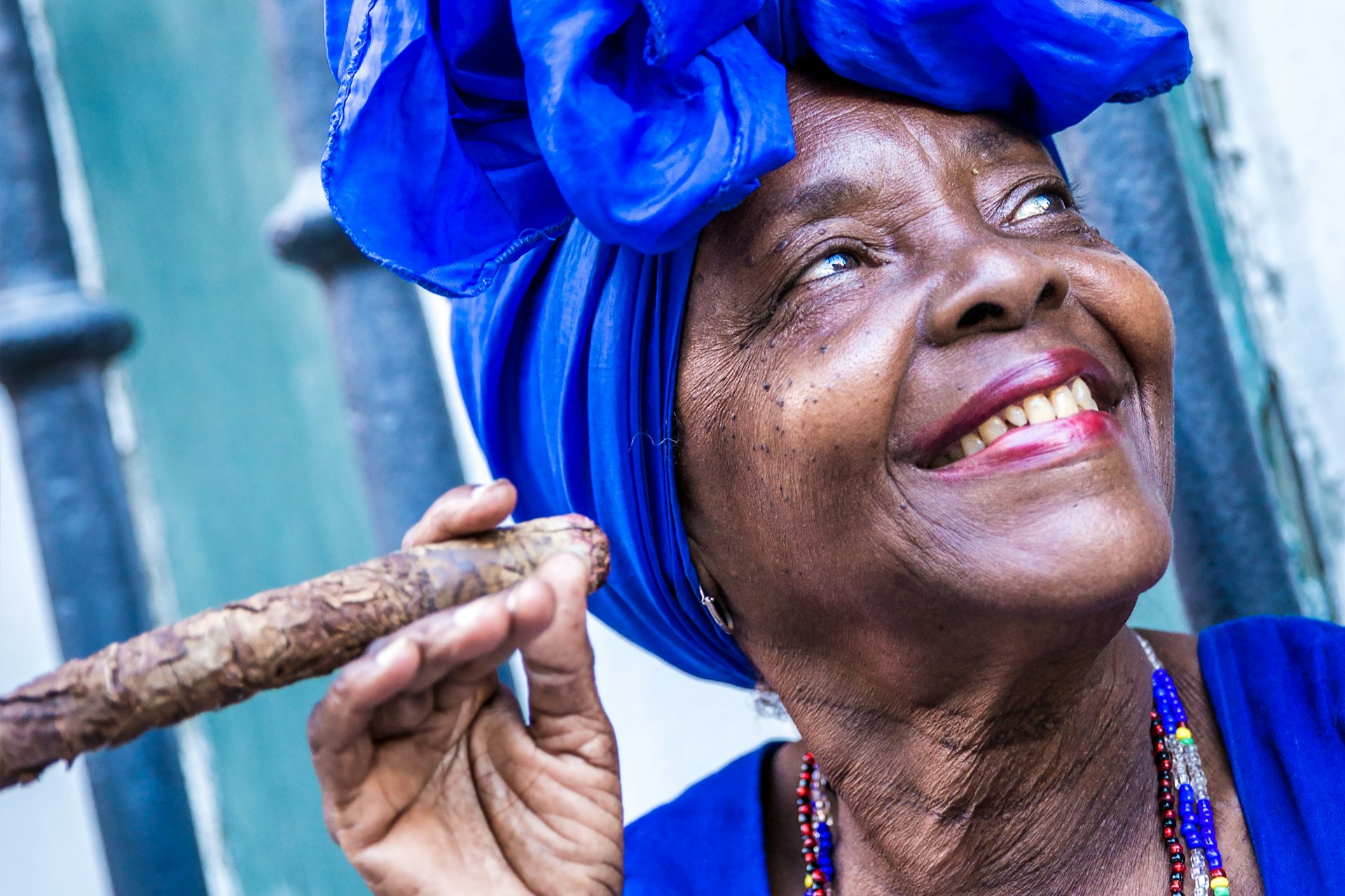
17. Avoid dodgy cigars
Cuba has its share of jineteros (touts) spinning elaborate stories about super-cheap, high-quality cigars procured by their brother/mother/cousin from the factory. Don’t believe them. Instead, buy your cigars in state-run shops such as the Casa del Habano chain. Cigars sold on the street are invariably factory cast-offs and not genuine.
18. Driving is not as easy as you think
With light traffic on the road, driving might seem like an easy proposition , but with elevated rental prices and cars often in short supply, it’s not always so.
Add in sporadic signposting, potholed roads and a wide array of hazards – goats, horses, bicycles, kids and slow-moving, fume-belching trucks – and you might want to consider getting the bus or, at least, employing the services of a chauffeur .
19. Bring toilet paper and sanitary products
The pandemic made the provision of antiseptic hand lotion more common, but the same can’t be said of toilet paper. Carry your own roll and/or gravitate to four- or five-star hotels when you’re caught short in the city.
Re-usable pads and silicon cups, or disposable pads and tampons are must-pack items if you're expecting your period while you're in Cuba. These are in high demand here.
20. Don’t drink the water
The water won’t kill you, but it might give you a little queasiness or an upset stomach. Fortunately, bottled water is abundant and cheap. An even better idea is to bring your own filter bottle or water purification tablets.
This article was first published Feb 5, 2022 and updated Jan 5, 2024.
Explore related stories
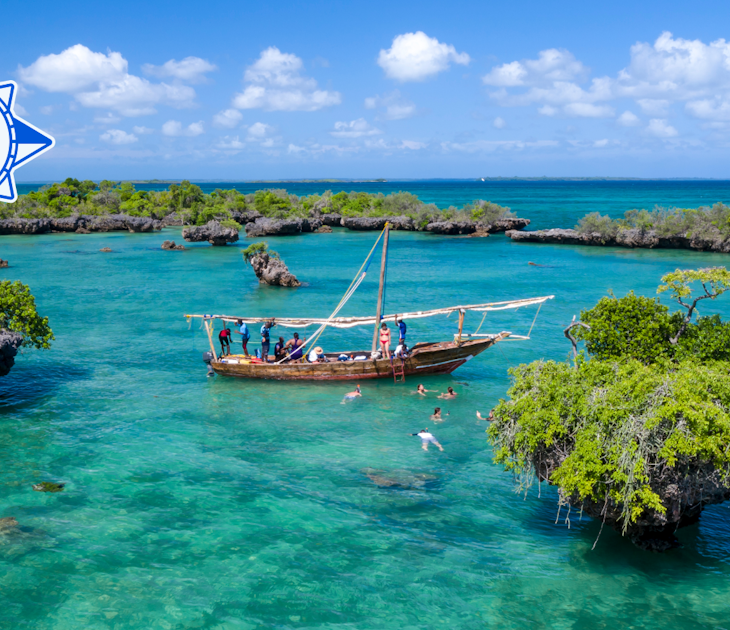
Tips & Advice
May 28, 2024 • 9 min read
From Aarhus to Zanzibar, plan your travels for July 2024 with these top places to visit.
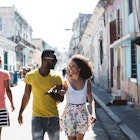
Jan 18, 2024 • 4 min read
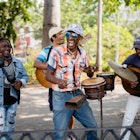
Jan 9, 2024 • 4 min read
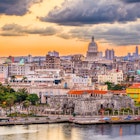
Jan 9, 2024 • 6 min read

Jan 7, 2024 • 10 min read
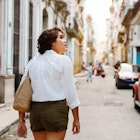
Jan 6, 2024 • 7 min read

Jan 5, 2024 • 4 min read
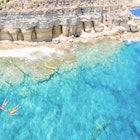
Nov 24, 2023 • 7 min read

Jan 6, 2023 • 7 min read

Jan 5, 2023 • 8 min read

Cuba Travel Guide for U.S. Citizens: What to Know Before You Go (Updated 2023)
Feb 3, 2023 | Caribbean , Destinations | 0 comments

Planning this trip to Cuba was the most challenging thing I’ve done to date in the name of travel. Out of all 26 countries, thousands of miles, from 5 years of traveling the world.
Once we landed in Havana, I knew that this place was unlike any I’d visited before.
Had I allowed the logistical challenge of traveling to Cuba as a US citizen deter me from visiting this country, it would have been my greatest mistake.
This Cuba travel guide for US citizens is up to date as of early 2023, based on my experience traveling to Cuba in December 2022.
In this post, I will cover Cuba travel FAQ and share how to visit Cuba legally as a US citizen or from a US airport.
Before you read, please note that there are sanctions from the U.S. government that restrict travel to Cuba.
It is the responsibility of each visitor to follow all laws and regulations, at home and abroad.
This website has a limitation of liability policy that applies to all posts, which you can read here .
This post contains affiliate links. See more in the disclaimer .
Can Americans Travel to Cuba?
Yes. And you can even do so independently.
The key is to visit legally, within the confines of OFAC (Office of Foreign Asset Control) regulations due to the embargo and sanctions.
IMPORTANT: These regulations also apply to non-US citizens that are departing from a US airport.

How to Travel to Cuba Legally
There are 12 categories of legal travel to Cuba under OFAC:
- Family visits
- Official business of the U.S. government, foreign governments, and certain intergovernmental organizations
- Journalistic activity
- Professional research and professional meetings
- Educational activities
- Religious activities
- Athletic competitions by amateur or semi-professional athletes or athletic teams
- Support for the Cuban People
- Humanitarian projects
- Activities of private foundations or research or educational institutes
- Exportation, importation, or transmission of information or information materials
- Certain authorized export transactions
Source: U.S. Department of the Treasury
The most common is Support for the Cuban People, which requires the following:
§ 515.574 Support for the Cuban People. (a) General license. The travel-related transactions set forth in § 515.560(c) and other transactions that are intended to provide support for the Cuban people are authorized, provided that: (1) The activities are of: (i) Recognized human rights organizations; (ii) Independent organizations designed to promote a rapid, peaceful transition to democracy; or (iii) Individuals and non-governmental organizations that promote independent activity intended to strengthen civil society in Cuba; and (2) Each traveler engages in a full-time schedule of activities that: (i) Enhance contact with the Cuban people, support civil society in Cuba, or promote the Cuban people’s independence from Cuban authorities; and (ii) Result in meaningful interaction with individuals in Cuba. (3) The traveler’s schedule of activities does not include free time or recreation in excess of that consistent with a full-time schedule. Source: Code of Federal Regulations
It will not be a vacation where you go to the beach and prop your feet up, buy things wherever you want, and stay wherever you want.
You must have a full-time schedule of activities that result in meaningful engagement with Cubans.
For us, that looked like many, many art tours and private gallery visits where we connected with local artists and had countless meaningful, deep conversations.
No topic was off-limits.
Everyone opened up (including us) and shared our passions, life experiences, opinions, and learned about one another. And yes, we talked about politics.
We were on the go, all day, every day.
And we didn’t really spend time with other foreigners. We crossed paths with foreigners a couple times, but everyone else we spoke to and spent time with was Cuban.

Casas particulares and paladares
Aside from your full-time schedule, you should also stay in casas particulares and eat at paladares.
A casa particular is a room in someone’s house. It’s been a normal way to travel in Cuba for years. There’s an infrastructure around it. You can find them on Airbnb.
We highly recommend this casa particular in Havana and this casa particular in Viñales.
Paladares are privately-owned small restaurants. Download A La Mesa for a list of restaurants all over the country. Each listing shows if it’s privately-owned.
The app also works offline, which will make your life much easier in Cuba.
Pro tip: If you’re also a vegetarian, make sure you try Camino al Sol ! It’s an all-vegetarian paladar in Havana.

What you are banned from doing in Cuba
You cannot spend money in OR interact with any of the places on this list from the US Treasury Department.
Many are hotels, so pay attention!
I copied and pasted these into a list to have on my phone, then accessed it offline while in Cuba to ensure there wouldn’t be any issues.
Is Cuba safe to visit?
Absolutely.
As a young woman who visited 25 countries before going to Cuba, I’ve been in a few…sticky situations. Cuba was amazing.
I never worried about being robbed and just felt at ease the entire time I was there. I tend to be a more anxious person, so that’s new for me.
This is my personal experience and I was not in Cuba as a solo female traveler, so yours could be different.
Is Cuba open for travel right now?
As of late 2022, visitors no longer need to show proof of Covid-19 vaccination or testing before entering Cuba. We brought our vaccine cards just in case, but no one asked to see them.
Please refer to this government site for updated information before your visit.
On our way back to the United States, we did have to share contact tracing information with our airlines using a form before we could check in. It was quick and easy.
Although many online sources claim masks are mandatory in certain settings, we did not see any places where masks were required in December 2022.

Accessing Money in Cuba: 2023 Updates
Everything you need to spend in Cuba must be in cash.
Because of the sanctions, your credit and debit cards will not work in Cuba.
If you try to use them, your bank will probably lock your account and it will take a lot of effort to get it unlocked.
In prior years, you would need to convert money to Cuban pesos before using it. Euros were the best to have because CADECA (the government exchange houses) charged a higher fee on USD exchanges.
As of late 2022, everywhere we went accepted U.S. dollars as payment. This was highly unexpected and deviated from every piece of advice I read online before leaving for Cuba.
However, it is still good to have some pesos for a fairer exchange rate. Some menu exchange rates were awful.
When we were in Cuba, we typically got 150 CUP for 1 USD. The CADECA rate was 110.40 CUP for 1 USD.
We exchanged money at our first casa particular and spent USD on activities, private taxis, and one of our casas. We usually spent pesos on art, food, and coffee.
Make sure you get cash in plenty of small bills. Twenties, tens, fives, and ones were useful. Anything larger than that will be annoying to deal with.
If your bank will only give you large bills, go to Publix and ask the customer service to break them when they’re not busy. Works like a charm!

Is it safe to exchange money on the street in Cuba?
You will be offered money exchange on the street wherever you go in Cuba. Just say “No, gracias,” and move on.
As a general rule of thumb, it is not safe or advised to exchange money on the street. This goes for wherever you are in the world.
The main reason it’s unwise to do this is forged currency. If it came from some random person, it may be counterfeit.
A local friend taught us how to know your Cuban pesos are real. Hold the bill up to the sun, and check the watermark.
The watermark will have a number on it, and that number must match the value of the bill.
If it’s a 100-peso bill, the number in the watermark should say 100.
Again, I do not recommend exchanging money in the street. We didn’t on this trip because we were able to get pesos from the front desk of our casa particular.
If you’re ever concerned about any bills you were given as change, use the tip from our friend for some peace of mind.
I also want to make it clear that we were never given counterfeit bills as change while in Cuba, but these things can happen anywhere.
You’re more vulnerable as a foreigner, because you don’t know exactly how the money is supposed to look.

Getting WiFi in Cuba
If a travel guide says there are only one-hour WiFi cards, it is outdated.
Now, you can access WiFi on a one-hour or a five-hour card.
WiFi is now cheaper in Cuba—it was $5 USD per hour; now, it’s $1 USD per hour.
We only needed one 5-hour card per person for the whole week.
Instead of waiting in the ETECSA line, we bought them from our first casa particular .
Overall, our Cuba WiFi experience was much easier than what we expected.
Don’t expect to be online all the time, but WiFi access is not as difficult as prior years.
Pro tip: The two main apps I highly recommend to download BEFORE you leave for Cuba are A La Mesa and Maps.me . Both work well offline and will save you such a headache.
On Maps.me specifically, also download the maps of each city/town you will visit in Cuba. In our case, I downloaded the maps for Havana and Viñales. When you have Internet access, put your casa particular addresses in a Note on your phone, so you copy and paste them into Maps.me whenever you need to. Same goes for any attractions you know you want to see.
If you want (and if your phone is unlocked), you could get a Cuba sim card, which comes with data. I don’t see the point for a one-week trip, but to each their own.
You can reserve those online in advance from Suena and pick them up at the José Martí airport (in Havana). If you go this route, you want the Tourist SIM Card from the top menu.

Can you drink the water in Cuba?
In short, no.
There was bottled water for sale everywhere on our trip in December 2022, but I read online before leaving that you can’t bank on that.
Instead, I bought this LifeStraw to have filtered water and it was the best travel purchase I’ve made. Ever.
Our Viñales casa particular hostess took one look at that bottle and pointed me to her giant drinking water spigot for us to have freely.
She was already familiar with the water situation for foreigners and told me it was smart to bring a reusable filtered bottle.
Highly recommend one of these !

Can you check in online for flights to Cuba?
There are too many documents the airlines must verify before they can issue a boarding pass.
You will also need a paper boarding pass for your Cuban health insurance, often included in your departure airfare.
Do you need to speak Spanish to visit Cuba?
Out of all Spanish-speaking countries I’ve visited, Cuba is the main one you need at least some language skills to visit.
There are people who speak English, especially young people, but it is not the norm.
If you don’t speak Spanish and you’re not traveling with a friend who does, download Google Translate for offline use before you arrive.
It won’t be ideal, but it will work when you need language help.
The best advice I can give is to travel with someone who speaks Spanish fluently. My best friend said many times while we were in Cuba that she would be toast without my language skills.

Can I bring Cuban cigars and rum back into the USA as souvenirs?
The answer used to be yes, as long as you purchased them from a private shop instead of a stated-owned one.
That answer is no longer the case, as of late 2022.
Now, you cannot bring any rum or cigars into the USA from Cuba, no matter how small the amount is or where they were purchased within Cuba.
When you arrive back into the USA, Customs and Border Patrol will ask if you have any rum or cigars. If you do, assume they will be confiscated.
What to Pack for Your Cuba Trip
I pack carry-on only and found Cuba to be one of the easier countries to pack for. The climate in December was perfect, with 80s in the day and 60s-70s at night.
Here is a short packing list of the things you need before going to Cuba:
- Mosquito repellent, because the insects in Cuba will eat you alive (I use these .)
- Comfortable shoes for lots of walking
- Cardigan or light sweatshirt
- Flowy/comfortable clothes (You can see one of the outfits I packed below.)
- One active wear outfit for hiking/horseback or bike riding (if you’re going to Viñales)

I hope this Cuba travel FAQ was helpful for you. I know how stressful it can be to figure out what to do when planning. If you have any questions, comment below and I’ll do what I can to help!
Read more Cuba travel guides:
- Cuba Pre-Departure Checklist
- What to See and Do in Cuba (Havana and Viñales)
- At Dusk in Havana, I Fell in Love
- Havana, the Art Sanctuary
- When It Destroys, It Starts with Us
- The Elephant in the Room: Socialism in Cuba
Save on Pinterest

Share this:
- Click to share on Facebook (Opens in new window)
- Click to share on Twitter (Opens in new window)
- Click to share on Pinterest (Opens in new window)
- Click to share on Reddit (Opens in new window)
Leave a Reply Cancel reply
Hi, I'm Sarah

Welcome to my oasis! I am a writer and budding entrepreneur with a love for caffeine, capital gains, and seeing the world. If I'm not writing, you can find me reading a good book, trying out a new vegan recipe, or adding to my coffee mug collection. My goal in life? To see every country in the world. Come along for the ride!

Cuba Travel Guide
Your ultimate cuba travel guide, with tips, things to do, and best things to see in cuba. great for first-time and returning travelers..
Located on the largest island of the Caribbean, Cuba is a very popular tourist destination and for good reason.
Cuba is home to beautiful white-sand beaches, impressive rainforests and waterfalls, vibrant culture, and lively cities .
Due to various trade restrictions over the years, Cuba has many described by many as like walking into a time capsule and is now a unique blend of the past and present, where vintage cars roam around colorful historic buildings and towns.
The birthplace of salsa music, Cuba is also full of rhythm. Add in its sub-tropical climate, and it is a great place to vacation.
This Cuba travel guide will help you plan your next vacation.
Popular Guides
- Things to do in Havana
- Cuba Photos
Our Highlight
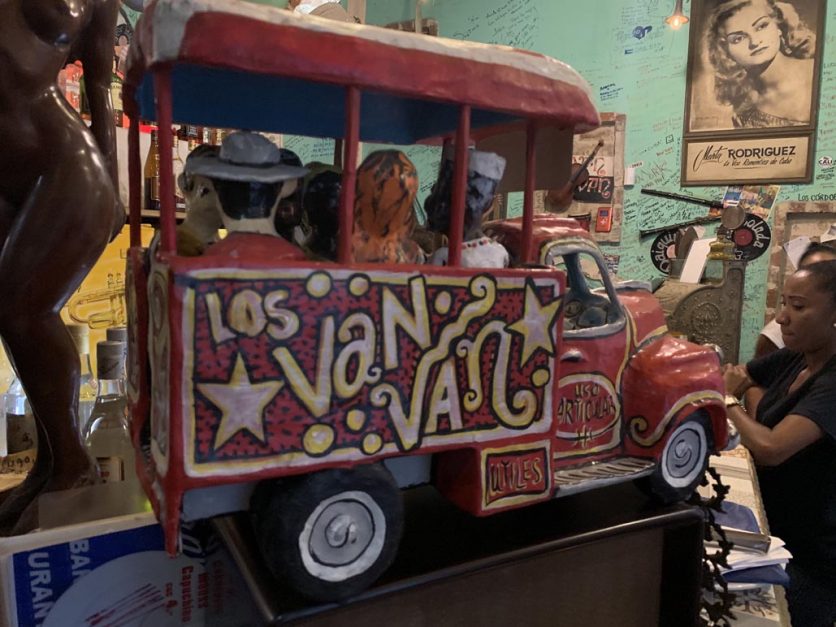
Table of contents
Table of Contents
Fast Facts about Havana
- Power voltage is 110V-220V at 60 Hz. Type A, B, C, and L.
- Cuba’s two currencies are the Cuban Peso and the Cuban Convertible Peso, mainly used for tourists.
- 1 Cuban Convertible Peso is equal to 1 USD.
- The best way to get around Cuba is by bus or taxi. If taking a taxi, make sure the taxi is licensed before riding.
- You need a tourist card to enter Cuba, as well as a passport that is valid for two months after your trip ends. The tourist card allows you to stay in Cuba for up to 30 days.
- The most popular cellular networks in Cuba are Cubacel and Digicel and both offer SIM cards. It should be noted the SIM cards can only be used on unlocked GMS phones. To rent a SIM card, you need a passport and your IMEI (phone ID) number.
- Cuba has a sales tax rate of 2% on wholesale sales and a 10% rate on both retail sales and services.
- SIM Cards : Cuba has very limited Internet and the best bet for visiting Cuba is to unplug, relax and if you have to, use your hotel’s limited WiFi for emergencies.
- It is advisable to download offline maps and any apps offline that you use to travel.
Things to See and Do in Cuba
- Hike Through Sierra Maestra: Cuba’s largest mountain range and the start point of the Cuban Revolution. Take a tour to learn more about Cuba’s history and enjoy a beautiful hike and great mountain views.
- Varadero Beach: Visit this pristine and popular beach in Sol Palmeras. Walk through the sand, swim in the clear waters, get to know other tourists or locals, or simply relax and take in the beautiful views.
- Old Havana: Old Havana is the city center of Havana is considered a crucial part of any trip to Cuba. Stroll through one-of-a-kind historic streets and buildings to see the history of Cuba.
- Tropicana Club: Head to the famous Tropicana Club for some great nightlife entertainment. Get dinner and enjoy the thrilling cabaret show that’s been running since the 1930s, featuring lively song and dance numbers.
Cuba Travel Guides
- 36 Fantastic Things to do in Havana, Cuba
Accommodation
Budget: Cuba offers family-run bed and breakfasts (or casas particulares) for around 15 to 25 pesos per night.
Mid-Range: For mid-range hotels, expect to pay roughly 70-130 pesos per night.
High-End: Upscale hotels will cost about 150-250 pesos per night.
Check out our favorite booking platforms Booking.com , Tripadvisor and VRBO for the best deals on accommodation.
If you’re on a budget, you can find options for pizza or spaghetti at around 3-4 pesos each.
Coffee lovers can find delicious cups of coffee for around 0.10 pesos. Restaurants are a good way to learn more about Cuban cuisine.
Expect to pay around 10-15 pesos for a meal at a restaurant.
The Best Ways to Get Around Cuba
Getting to cuba:.
Getting to Cuba: While there are 10 international airports in Cuba, the Aeropuerto Internacional José Martí in Havana is the main one, with the Gualberto Gómez International Airport in Varadero being a close second.
Flights: You can check for the best flights to Cuba on Skyscanner .
Transportation:
Transportation: Look for the Viazul buses, which are made especially for tourists and feature air-conditioning. Great for long distances, you can travel from Trinidad to Havana in six hours for just 25 pesos.
You will want to arrive at the station in advance to get a spot.
Trains : The train system in Cuba runs the length of the island and is a good way to meet the locals.
Go from Havana to Santa Clara for just 20 pesos, or from Santa Clara to Santiago de Cuba for 50 pesos. Be advised that the trains only run every few days, so planning ahead is key.
Taxis: Taxis are an alternative way to get around Cuba.
Fares start at 1 peso as a flat rate and increase by 1 peso for each kilometer traveled.
To travel from Old Havana to Miramar, for example, costs 8 to 12 pesos.
Car Rental: It is possible to rent a car in Cuba, but it is expensive and can be convoluted. Take care when you do. Check rates and availability here.
When to go To Cuba
Between November and April is the most popular time to go to Cuba, as temperatures range from 78 to 85 degrees Fahrenheit and skies tend to be blue.
You can find higher temperatures (up to 90 degrees) and lower hotel rates in August but note that hurricane season is between August through October.
Where to Stay in Cuba
Iberostar Grand Packard – Located on the Malecon and walking distance to Old Havana, this is the premier place to stay in Cuba.
Hostal Las Palmas :One of the most highly rated bed and breakfasts in Trinidad. Explore Trinidad and the Playa Ancon beach, which are both close by.
Suite Florencia : Built-in 1940, this colonial house turned hotel in Santa Clara is right in the middle of everything. Descend the white marble staircase into this romantic hotel.
Enjoy beautiful views of Santa Clara from your room, or roam about Santa Clara and visit the nearby restaurants and bars.
What to Pack for Cuba
Cuba has a tropical climate so you can count on it being hot and humid.
- Swimsuit: With Cuba”>
- Sunscreen: Protect your skin from the powerful sun with some sunscreen.
- Cash: As you may not be able to withdraw money from your bank accounts while in Cuba, make sure to bring an appropriate amount of cash based on what you think you’ll spend.
- We didn’t have a problem withdrawing from ATMs in Havana, but it is better to be safe
Cuba Travel Guide: Best Booking Resources
Whenever we travel to we make sure to start with these companies. We have tried a lot of different ones over the years and all of these have consistently proven to be the best when it comes to offering great prices.
We have used every one of these personally and continue to do so.
- Booking.com : This is our go site to when comparing prices for accommodation. It usually has the cheapest prices, especially in Europe and we love their interface. Not to mention you get free cancellation and you are guaranteed the best price.
- Trip Advisor : What we like about Trip Advisor is that we can look at all the reviews and then book our accommodation. TripAdvisor is where we go when we want to compare prices with multiple accommodation providers.
- VRBO : is the main search engine we use when we are looking for a home or apartment rental. It can sometimes be cheaper than hotels and it is the best way to stay in areas that offer a more local feel.
- Hostelworld : With one of the largest databases of hostels in the world, Hostelworld is the go-to site when you are looking for budget accommodation.
- Skyscanner : This is the first place we check for flights. It consistently comes back with the cheapest and best options. It allows us to compare a lot of airlines to get the best price.
- Rome 2 Rio : If you want to see how to get somewhere by plane, train, bus, ferry or car Rome2Rio lays it all out for you as well as related costs.I love how they show it all to you on a Google Map and it works offline.
- Get Your Guide: For all your day trip and city guide needs, we use Get Your Guide. It has the world’s largest collection of things to do with more than 30,000 activities in 7500 destinations.
- World Nomads Insurance: When traveling to Italy you should always have travel insurance. We have found the best bang for your buck is by far World Nomads.
Cuba Travel Guide: Related Articles
To browse all our articles and guides about Cuba Click Here.
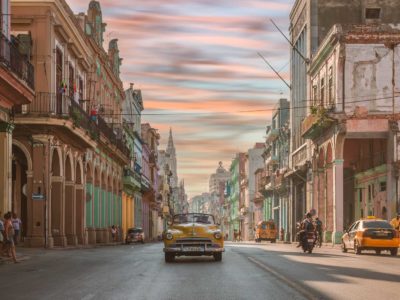
19 Unforgettable Places to Visit In Cuba in 2024
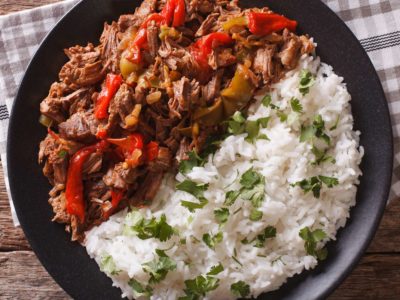
Cuban Food: 23 Cuban Dishes You Can Try at Home
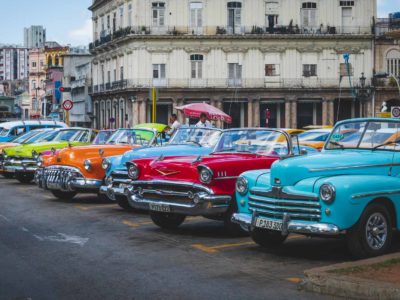
19 Fun Facts About Cuba You Never Knew

How to Spend Two Weeks in Cuba: An Itinerary for First-Time Visitors
Cuba is entirely unique.
From the crumbling facades of Havana old town to the lush valley of Vinales and the pristine beaches of Varadero, there’s a lot to fit into two weeks in Cuba. You will fall in love with the salsa rhythms of the warm Caribbean evenings, find modern paladares with some amazing Cuban cuisine, and explore a surprisingly biodiverse country full of secret waterfalls and dense jungles.
But it’s the people of Cuba that are the most welcoming. Spending just 14 days in Cuba gives you a sense of an entirely unique culture that’s resourceful and resilient, but above all, happy. A turbulent history of revolution, communism and trade embargoes has given this island a ‘stuck-in-time’ feel that many of us in the Western world long for.
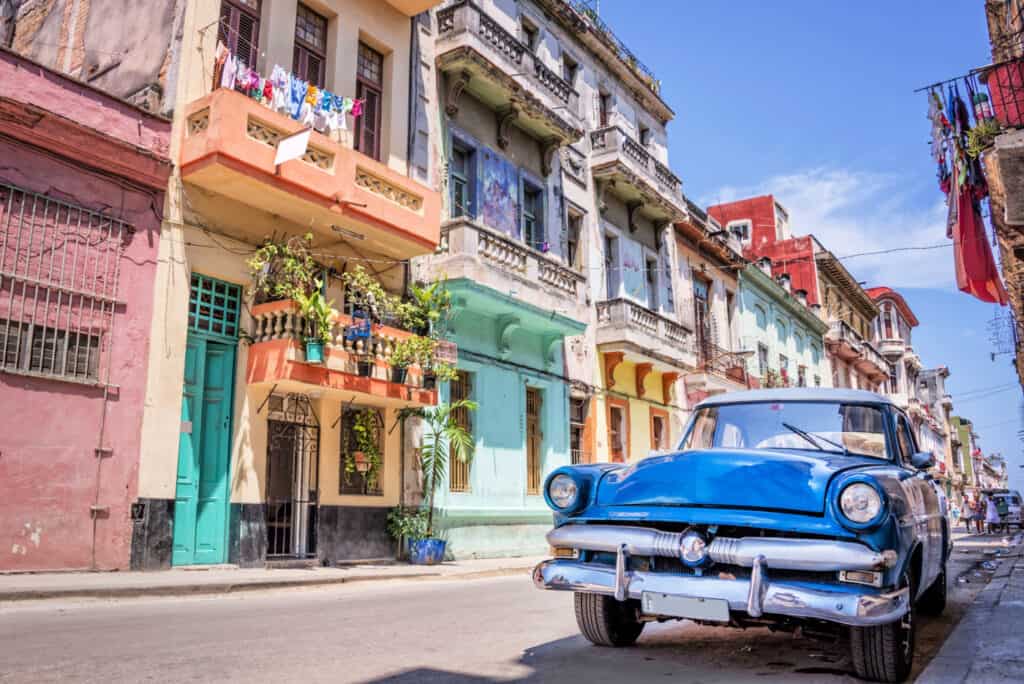
Getting Around in Cuba
Of course, it isn’t exactly a small country, and you couldn’t possibly fit everything into just two weeks in Cuba. Especially with the Cuban transport and road network being the way that it is. But if you focus on specific places that each show a different aspect, you can get a great insight into this wonderful country.
Cuba doesn’t have a fantastic rail infrastructure like Japan or the cheap overnight buses of South America . Getting anywhere takes a long time, it’s best to hire a local driver or book buses through a hotel if you’re traveling around Cuba for two weeks.
Rather than trying to fit a lot into your Cuba itinerary, enjoy spending a little time in each place. Of course, the slow pace of life does have its benefits; Ernest Hemingway came for a short visit and stayed twenty years!
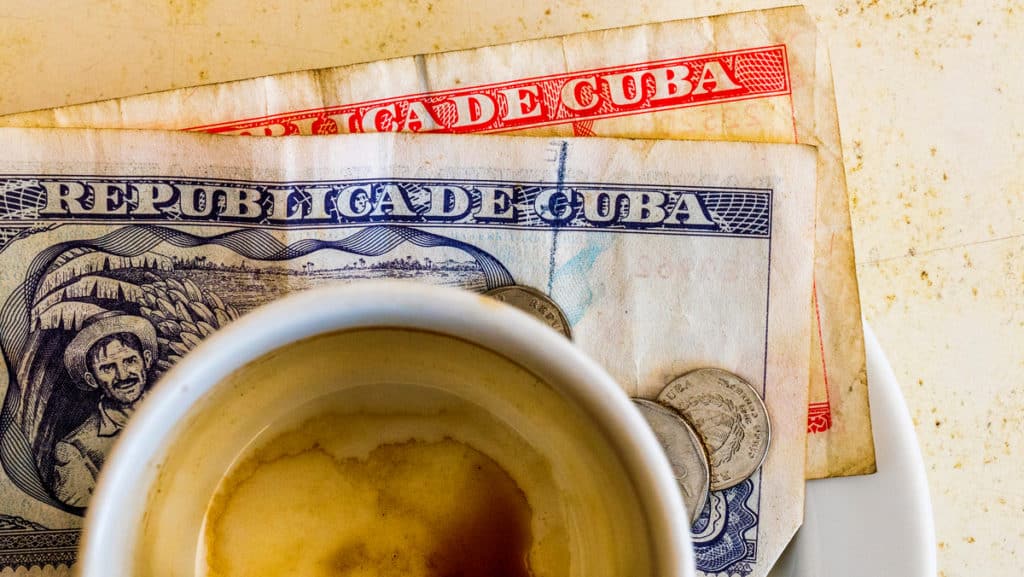
Money in Cuba
There used to be a tourist currency (CUC) and a local currency (CUP), but thankfully this confusing system has been phased out by the government leaving just Cuban pesos as the sole currency. You can’t buy Cuban currency outside of the country or with an American bank account so make sure to take enough cash to exchange. ATM’s can be found in the cities, but are few and far between in remote areas and in various states of disrepair. Cards are not widely accepted either due to the lack of reliable internet connections. I have a detailed guide to travel costs in Cuba if you’re keen to read more.
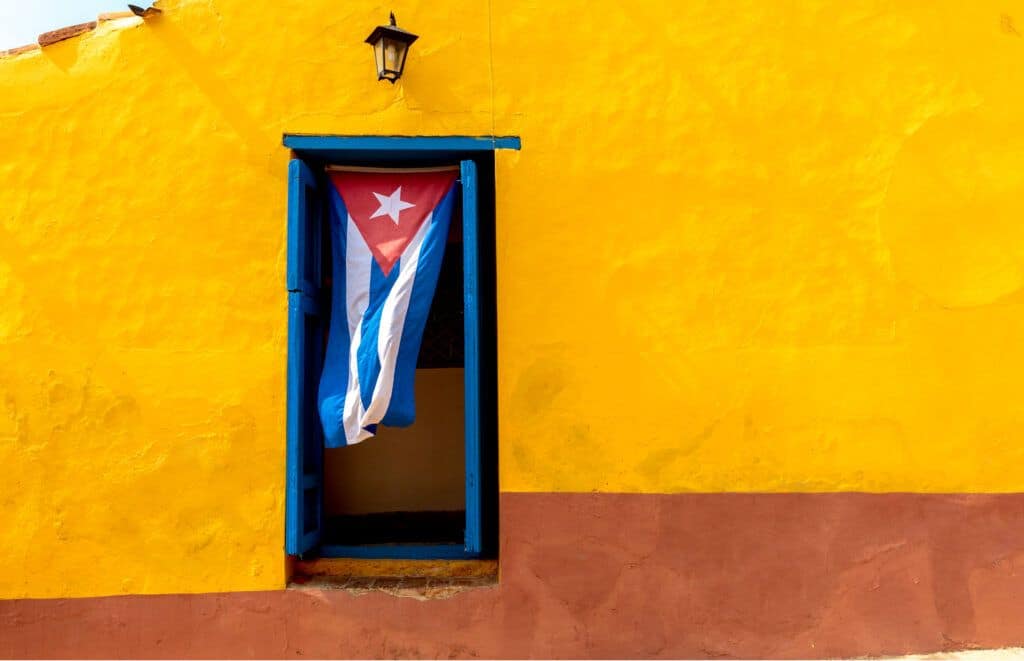
How to Spend Two Weeks in Cuba
Our Cuba itinerary starts with 3 nights in Havana, then heads out to cigar country in Viñales for a 3-night stay. We then spend 2 nights in Cienfuegos, 2 nights in Trinidad, and take time out with a 3-night beach retreat at Varadero. Finishing with the last night in Havana, to ensure we can easily make it back to the airport on time!
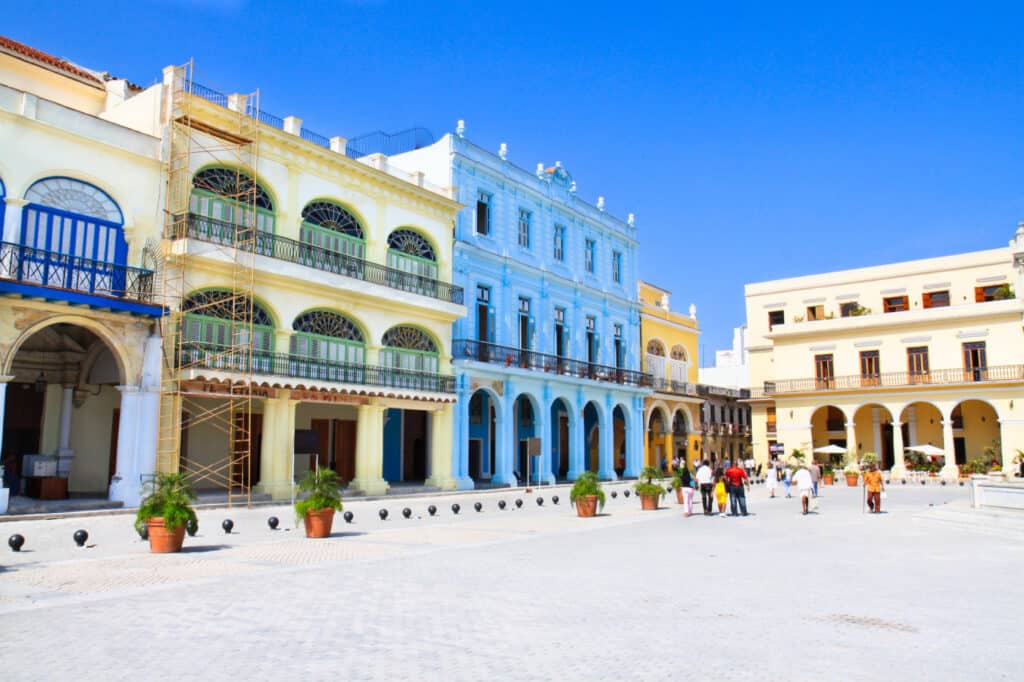
Day One: Arrive in Havana and Acclimatize
Cuba can be a bit of a culture shock. Even if you’re an accomplished traveler, Cuba has unique oddities that separate it from the rest of the world. Firstly, say goodbye to being connected 24/7, or maybe even at all.
Although there is some Wi-Fi in big hotels (like Hotel Inglaterra in Havana), the rest of the country remains disconnected. Wi-Fi hotspots in places like Vinales see crowds of teens huddled around them, desperate to stay updated with the outside world.
So, you can forget about getting any updates unless you want to relive the dial up speeds of the late ‘90s, but it does have its benefits. Cuba gives you a chance to disconnect from modern life and get back to seeing a place through your own eyes rather than distorted through a screen.
Spend the first day easing yourself into the pace of life in Havana. I recommend staying in the old town. It’s touristy, but it’s also close to everything. In my mind it’s not worth wasting time bartering with taxis or getting lost on public buses when you can stay right in the heart of it all.
Wander the cobblestone streets and head over to the old town square Plaza Vieja. Built in 1559 this square is full of the crumbling facades and colorful paintwork that make Havana so iconic. Pop up to Cámara Oscura for an unusual view of the city, then head over to retro 50’s bar La Vitrola for some of the best cocktails around. The food is a mix of Spanish tapas and traditional Cuban cuisine.
A great place to stay in the old town is Residencia Santa Clara . The rooftop terrace is great for evening drinks, with great views over the city. The hosts are wonderful, and they make you feel like you are part of the family.
The house itself is well designed, spacious and each room comes with a bathroom with a rainfall shower. I love that the hotel offers such a generous breakfast, and the coffee is super strong!
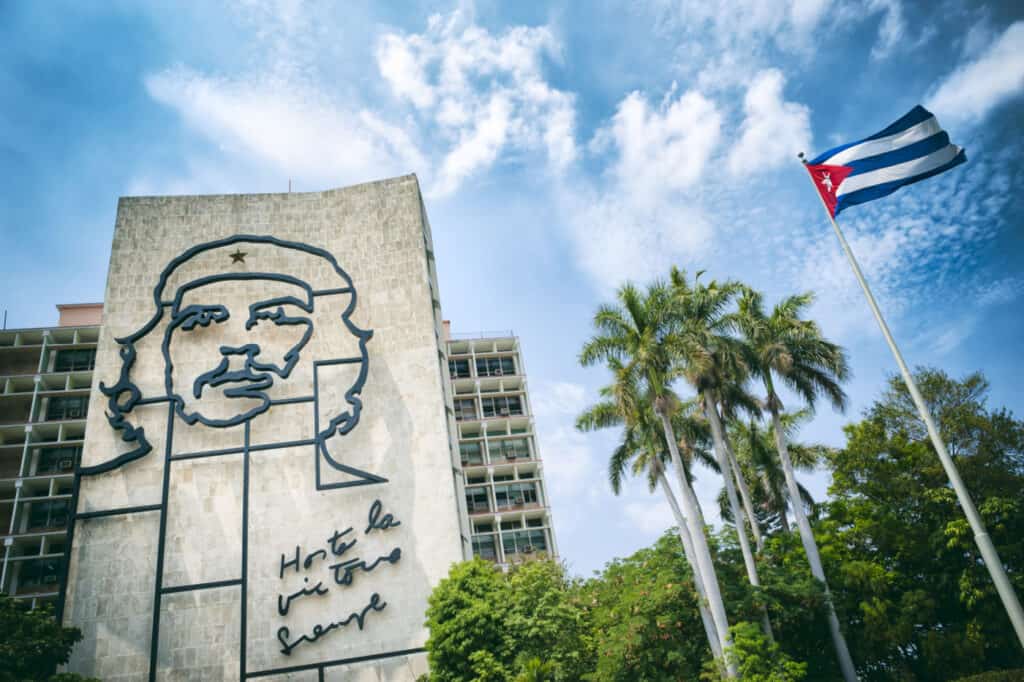
Day Two: See the Sights of Havana in a Vintage Car
A great way to get your bearings and fit in a lot of the more spread-out sights in Havana is by taking a classic car tour. Pick the best-looking vintage car from the parade at Parque Central and tour the city in style. And yes, my choice always is a bright, Barbie pink!
Seeing the city in the way easily beats the Havana hop-on-hop-off bus that’s also available in nearly every other capital city.
We were so enamored with our 1950’s Ford Thunderbird that we neglected to check that the driver could speak English on our second visit to Cuba. And so, my biggest tip here is that if you want an informative tour, always check your drivers spoken language and tour route before you hop in!
The driver will usually take you out to Vedado, past many beautiful colonial buildings and wide boulevards. A stop at Plaza de la Revolución is a must to grab snaps of the great monuments to the imposing revolutionaries of Cuba. These include the iconic portrait of Che Guevara, heroic guerrillero Camilo Cienfuegos, and the José Martí Memorial. The square serves as the base of the Cuban government and hosts large-scale political rallies and events like the pope’s famous visit.
You will also likely visit a small park with a familiar Liverpudlian seated on a bench. Although he never visited Cuba, John Lennon Park was created by the communist Cuban leader Fidel Castro as an ode to a “fellow dreamer”. There’s also a full-time security guard loitering around the bench, looking after Lennon’s iconic glasses.
Back at Parque Central you can’t miss the grand golden cupola of the National Capitol of Cuba. The whole area is full of baroque buildings that wow at every turn. Spend the evening next door, catching a show at the Grand Theater of Havana. The impressive architecture of the palatial theater built in 1838 is worth the entry fee alone.
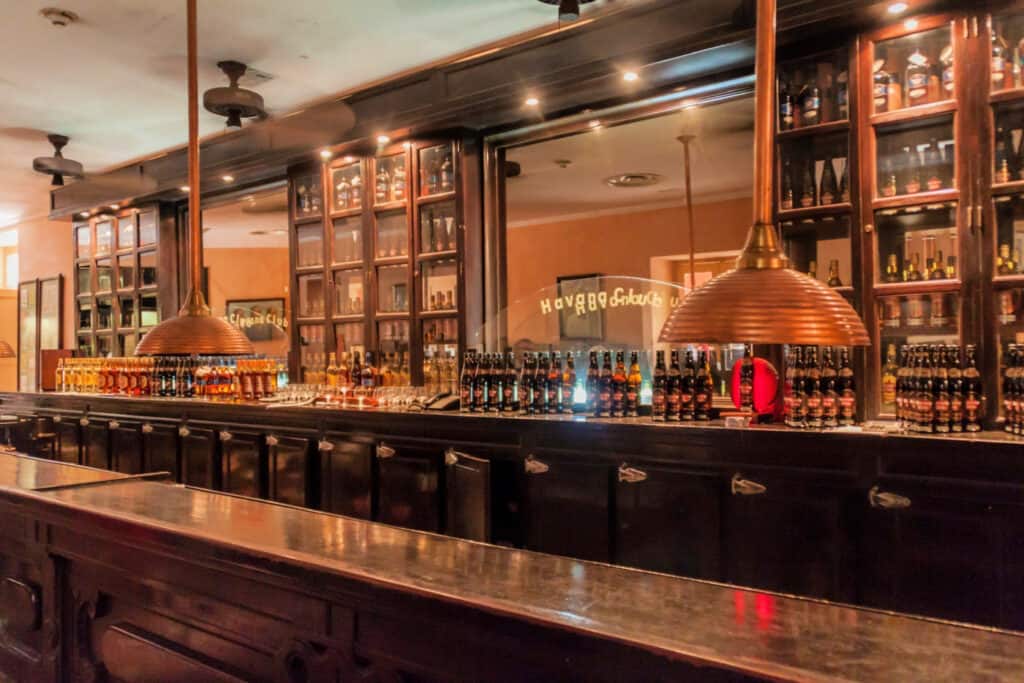
Day Three: Visit the Museums of Havana
For your third day in Havana, dig a little deeper by visiting some of the best museums in the city. The Museo Nacional de Bellas Artes holds some of the most important art in Cuba. There are 24 rooms with more than 45,000 works, there are also art pieces from the ancient world with collections from Rome, Greece, and Egypt.
Head over the road to El Floridita Bar for a quick refreshment at one of the most famous bars in the city, you might not get a table as this place gets super busy, but the interior is worth a look if you’re nearby.
Remaining on the drinks theme, Havana Club Museo Bar is the place to learn all about the globally exported tipple. Havana Club Rum is a big deal in Cuba, learn all about the rum-making process, from the sugar cane itself to a scale model factory. Tasters are usually free too!
You can also visit the Museum of the Revolution housed in the former presidential palace. This museum pays homage to the country’s greatest revolutionaries as well as Fidel Castro’s famous yacht. Another option that’s great for children is the Natural History Museum or ‘Museo Nacional de Historia Natural de Cuba’ located in the center of Havana at the Plaza de Armas. It’s full of natural wonders and a great place to learn about the diverse life on this island.
Spend the late afternoon climbing the bell towers at La Catedral de la Virgen María de la Concepción Inmaculada de La Habana. Get some great views over the city and explore one of the best churches in Havana. It’s advised to wear long pants as a mark of respect, or wraps are provided to cover bare legs.
Havana has some of the best food in Cuba, so don’t miss eating at one of the many great restaurants, or paladares, while you’re in the city. Try Ropa Vieja (shredded beef) at La Lluvia de Oro restaurant or for some of the best traditional Cuban cuisine visit Los Mercaderes.
For evening drinks there’s no better place than La Bodeguita Del Medio. It’s one of the most famous watering holes in Havana, with walls covered in messages and pictures of famous visitors. There’s only one thing to drink here, a mojito. A popular spot with the mint cocktail loving author, Ernest Hemmingway, this place is usually busy with tourists, but the music and the friendly staff always make everyone feel welcome.
Of course, for a real slice of Havana life, visit the Malecón at sunset. Spot couples out on a date, families taking an evening walk and businessmen on their way home from work. All walking along the promenade taking in the last sun kissed views of the city before nightfall.
You can arrange your onward travel by bus through a hotel or tourist information point or arrange a collectivo (share taxi) or private driver through your casa particular.
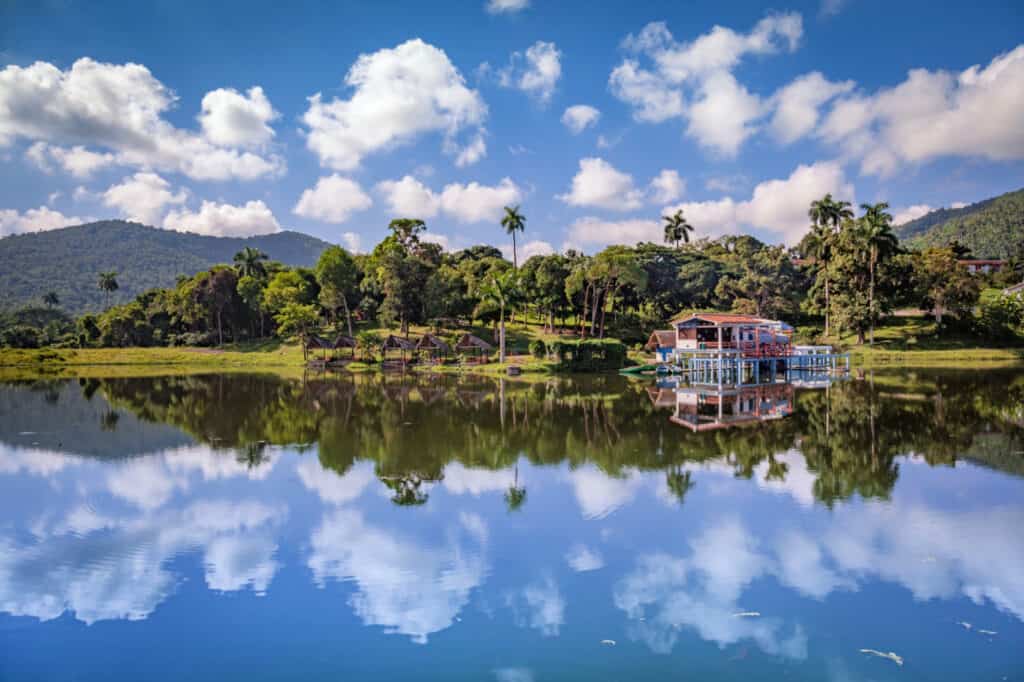
Day Four: Stop at Las Terrazas on the Way to Vinales
On the way to your next casa particular in Vinales, stop off at Las Terrazas. Started in 1968 as an ecotourism project, the area contains over half of Cuba’s native birds; it’s home to 117 species of birds in total, and 12 of them are endemic.
Fidel Castro enlisted Camilo Cienfuegos’s brother to build 1,360 kilometers of terraces to combat erosion, resulting in a self-sustaining community with roads, homes, and schools. Locals include an entire artist colony, who live and work in the area full time.
The community planted an astonishing seven million trees between 1968 and 1978. Then it was designated a Biosphere Reserve by UNESCO in 1984. It’s the perfect stop for lunch and a hike. Las Terrazas is located in the Artemisa province in the Sierra del Rosario mountains, on the way from Havana to Vinales.
Many tourists never stop here, but locals often visit Las Terrazas as a day trip from Havana. Visit community projects like the Aire Libre café, the Casa-Museo Polo Montañez and the Moka Hotel. There’s also Cuba’s first zipline, with six lines surrounding the local village, and horseback riding along the San Juan River.
If, like us, you love hiking, the Sierra del Rosario has some amazing options. Climb Taburete Mountain, visit the ruins of the San Ildefonso and El Contento coffee plantations, or take the easy six kilometer hike up to the Santa Serafina Coffee farm. It’s best to hire a local guide for all of these though, as the trails aren’t marked and it’s pretty easy to get lost!
Then travel onto your casa particular in Vinales to relax for the night. Stay in the heart of town to be close to everything. Casa Esperanza Tuta features air conditioning, private bathrooms, and mountain views. We loved the hosts – they went above and beyond to make our stay as comfortable as possible. And the continental breakfast, with locally grown fruit, is amazing.
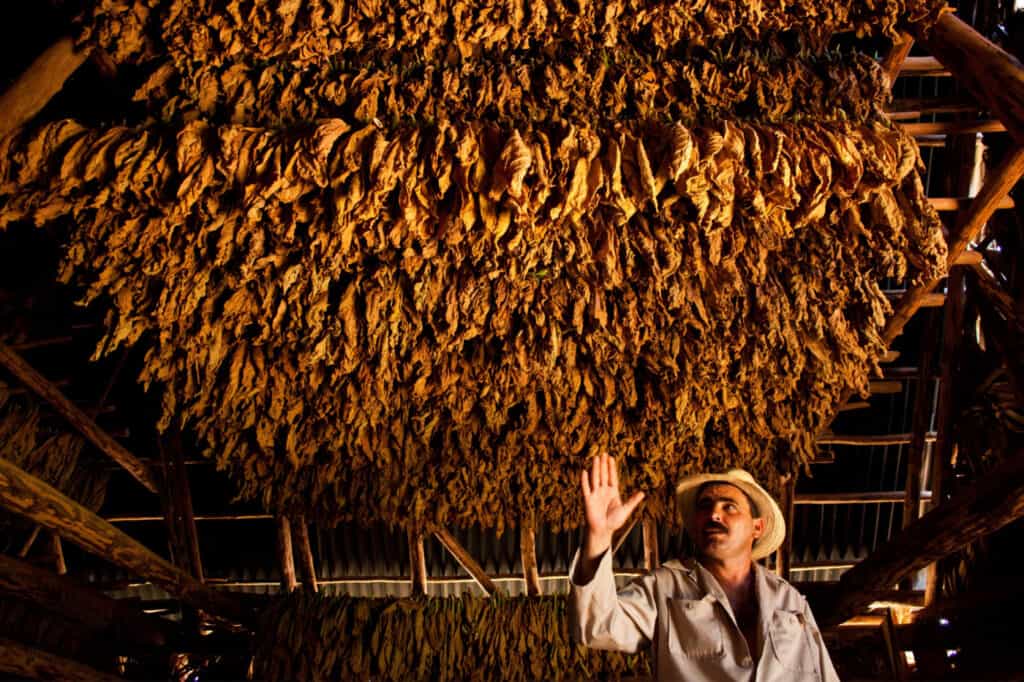
Day Five: Discover Where Real Cuban Cigars are Made
Vinales is a beautiful part of Cuba to visit, with its lush green valleys and large limestone outcrops. These towering cliff-like structures are known as mogotes, they can rise as high as 300 meters in this area and dominate the landscape.
Vinales is best known for its tobacco and coffee plantations, take a tour to find out how the locals grow, harvest, and produce these vital commodities. These aren’t the polished, flashy coffee tours of Costa Rica or the organized tours of coffee plantations in Colombia .
These tobacco and coffee tours are the real workers taking you around their farms. There’s usually a healthy amount of rum involved! And of course, at the end you have the chance to buy their products straight from the source (at heavily discounted prices, which I can highly recommend).
Avoid buying fake cigars from street sellers in places like the Malecon in Havana and get them here instead. Cuba is of course well known for its cigars, but if you’ve never tried the coffee be prepared for a kick! It’s some of the strongest coffee in the world.
A mixture of how the beans are grown and how the coffee is made makes for an intense caffeine hit. Even the most avid caffeine addict might get a shock from the strength of Cuban coffee.
In the afternoon hire a bike to explore Vinales, you can visit the nearby Mural de la Prehistoria and see the many beautiful views of the valley. Explore the backstreets and get a sense of the quiet country life in Cuba.
Return to your casa to enjoy a beautifully home cooked meal. There are usually three choices; chicken, pork or lobster, served with rice and a tasty assortment of local vegetables and fruit. You will probably get to try them all if you’re in Cuba for two weeks.
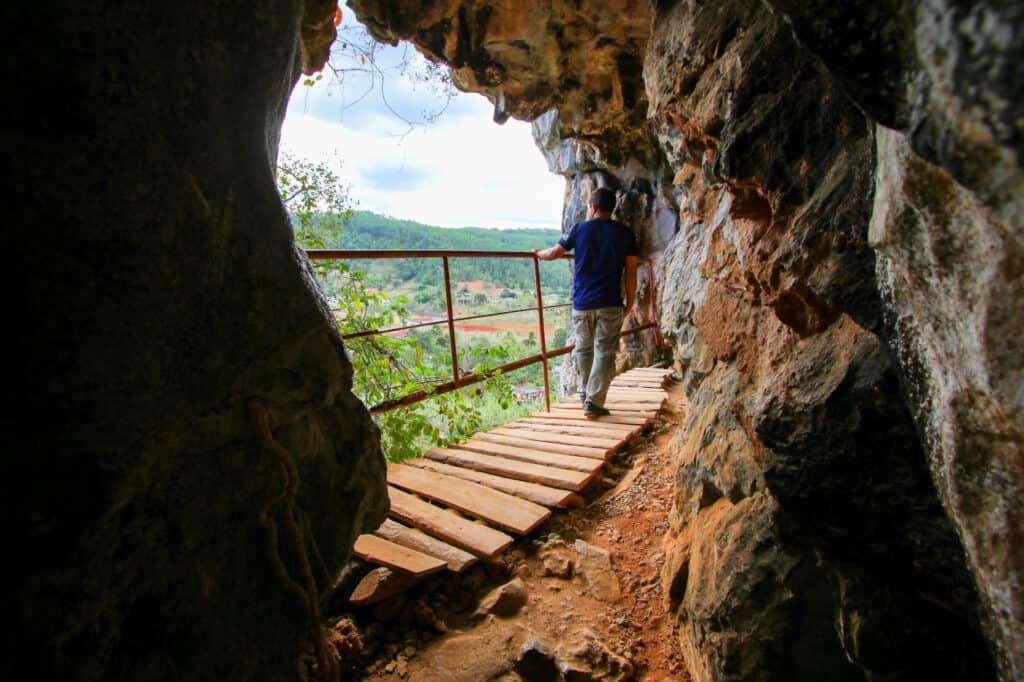
Day Six: Go Caving in Vinales
On your last day in Vinales, you could do other farm tours or simply relax around town. But for something a bit different, take a day trip from Vinales to visit the largest cave system in Cuba.
Gran Caverna de Santo Tomás is just a 30-minute drive away and is composed of more than 46 km of galleries in eight different levels. Take a 90-minute guided tour to see the stalactites and stalagmites, underground pools, and other interesting rock formations.
Your casa particular should be able to arrange a driver, and maybe even the tour. Cubans are entrepreneurs and everyone knows each other in these small towns. Don’t be surprised if you find one person doing multiple jobs; tour guide, driver, cook, entertainer!
In the evening make sure not to miss the music and dance venues that line Cisneros Street. 3J Bar Tapas is a great place to grab a rum, pull up a rocking chair, and watch the world go by.
Vinales is the perfect place to get a sense of Cuban life outside the city. There may not be an amazing internet connection or public transport, but everyone is smiling, and help is never too far away.
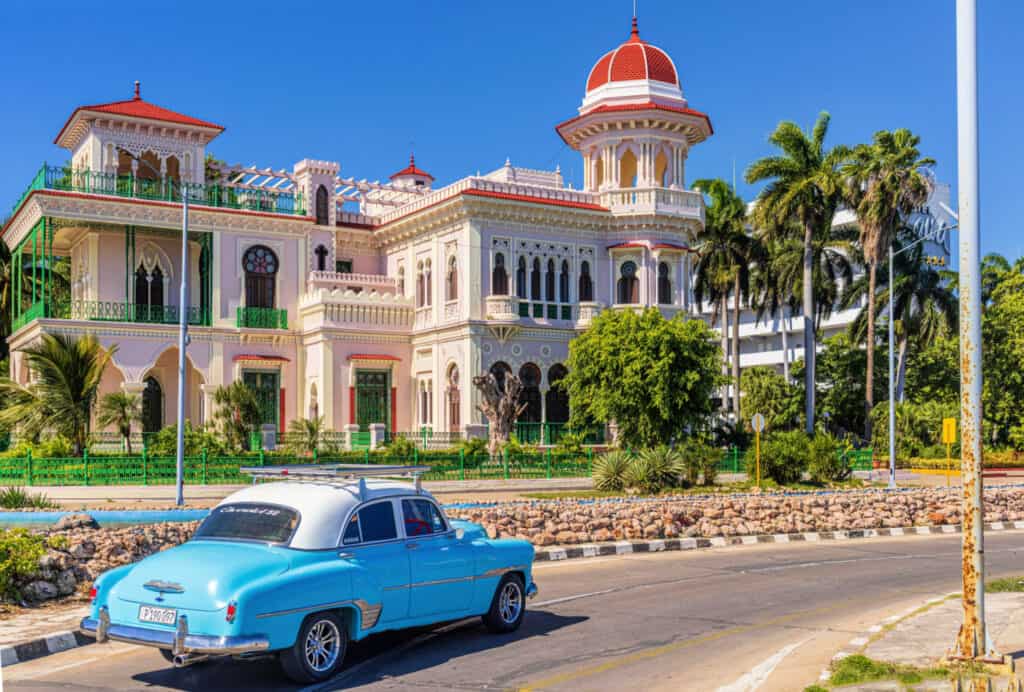
Day Seven: See the Architecture in Cienfuegos
Next up is a visit to Cienfuegos, which translates to ‘One Hundred Fires’. The city was founded in 1819 by French immigrants from Bordeaux and Louisiana, and you will notice the buildings have strikingly different architecture to the rest of Cuba.
There is an unusual combination of Baroque, Gothic and Moorish styles. Visit the Jose Marti Park and the central plaza on your first day to get a taste of the city. Many say it’s the most beautiful main square in Cuba.
A visit to La Reina Cemetery is also a must while in the city. Declared a national monument in 1990, the impressive statues and headstones make it one of the most interesting places to visit in the city.
In the evening head to the well-known Te Quedaras restaurant for traditional Cuban food, great drinks, and a lively atmosphere. We loved the pina coladas, and the Cuban music playing well into the night.
Stay at the Casa Buena Vista for bright airy rooms right in the center of Cienfuegos. The eclectic design, with everything from old vinyls to patron saints stuck to the walls, made us fall in love with this home from home. The terrace and lively bar are also fantastic for meeting other guests.
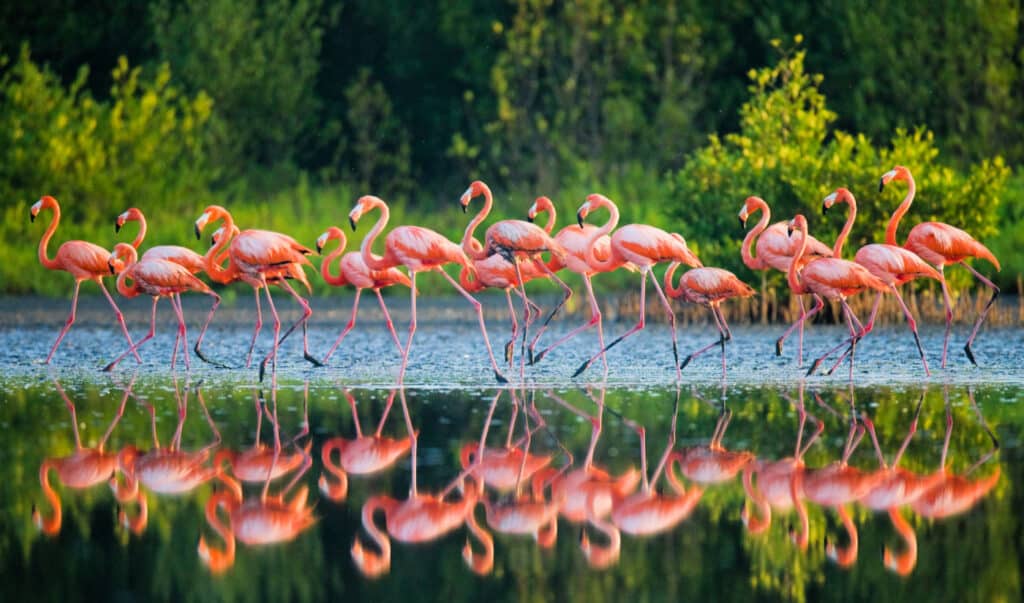
Day Eight: See Flamingos and Bathe in Waterfalls in Cienfuegos
On your second day in Cienfuegos, explore the surrounding area with its diverse landscapes and abundant wildlife.
For a chance to spot pink flamingos head to Laguna Guanaroca, just a 30 minute drive out of the city. Take a guided tour of the lake to learn about the local wildlife, flora, and fauna that make this part of Cuba their home.
Another option to get out of the city for a while is a visit to El Nicho, a beautiful and popular swimming hole fed by waterfalls. A round-trip taxi will cost you about U.S. $30 from Cienfuegos center. It’s a great way to cool off in the summer heat and hang out with the locals.
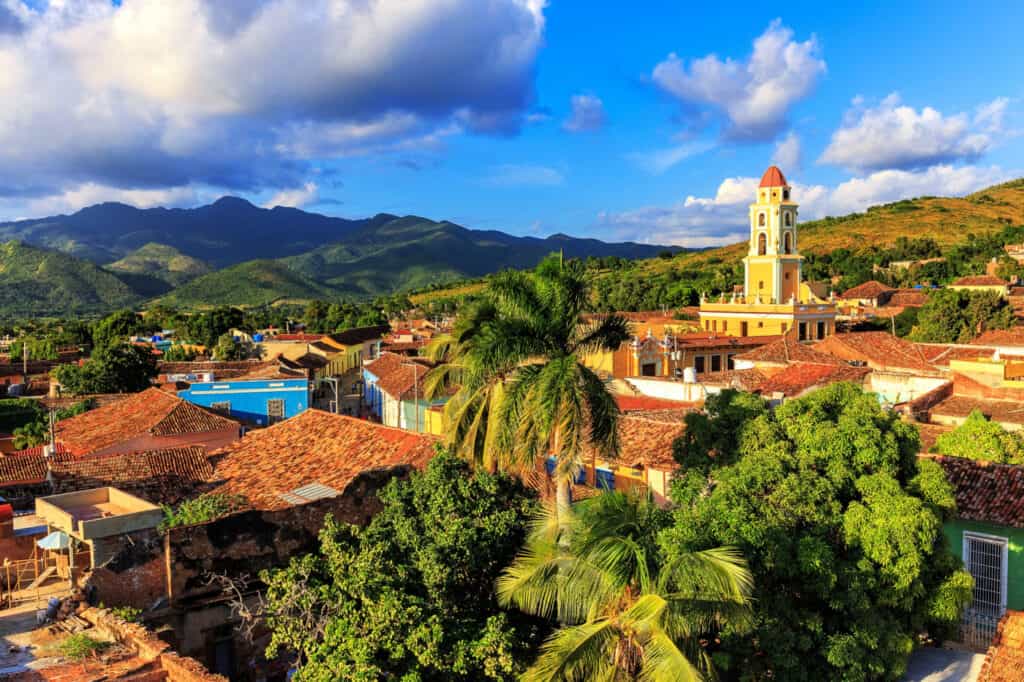
Day Nine: Visit the Historic City of Trinidad
Travel east to Trinidad on day nine, and the furthest point on your trip around Cuba.
Trinidad is the Cuba you’ve always imagined. Colorful houses, straw hats and cigar toting locals. It’s the second oldest city on the island. Trinidad was founded in 1514 and declared a UNESCO World Heritage site in 1988.
Visit Plaza Mayor to see the beautiful 17th-century structures and get to the heart of the local culture. Grab a coffee and watch the world go by as you soak in the atmosphere in this lively, picture-perfect town. Or take a walking tour of the area.
Get some of the best views over town from Museo Nacional de la Lucha Contra Bandidos. Then in the evening visit one of the music venues hidden in an underground cave, like Disco Ayala.
Stay at Casa Barmarin , located in the pedestrian area of Trinidad, right between the markets. The tranquil gardens and rustic rooms are stylish and full of eco-friendly little touches, but the casa still retains its Cuban charm. A highlight is the outdoor terrace and seating area, the perfect place to unwind from a busy day’s sightseeing.
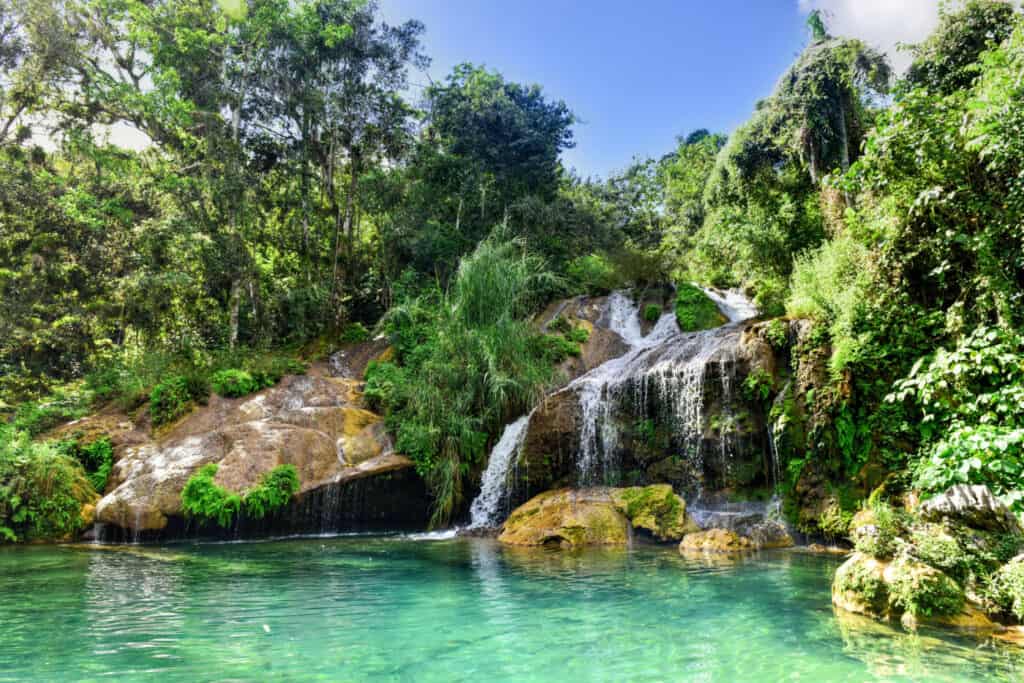
Day Ten: Day Trips from Trinidad
There’s plenty to do outside of Trinidad too. If you’re feeling energetic, visit the stunning mountains of Topes de Collantes. Take a seven kilometer round trip hike to Salto del Caburni, a 60-meter-high waterfall with impressive views of the surrounding area.
Another great thing to do near Trinidad is to take a steam train ride to visit the abandoned sugar plantations at Valle de Los Ingenios. It was the center for sugar processing and refinery and brought a lot of wealth to Trinidad during the 17th and 18th centuries.
There were 56 sugar mills in total powered by more than 11,000 slaves, bringing with it Afro-Cuban heritage like Santería, a syncretic religion between Catholocism, and Yoruba beliefs.
If you can, fit in a visit to the untouched reefs at Playa Ancon, and chill by the sea. Head back to Trinidad to try some of the local catches at the best paladares, like fresh snapper at Restaurante San José, or grilled octopus at Vista Gourmet.
In the evening try a Canchánchara, a potent rum cocktail, at the Taberna La Canchánchara. It’s one of the four drinks that Cuba’s best known for along with the mojito, daiquiri, and Cuba libre.
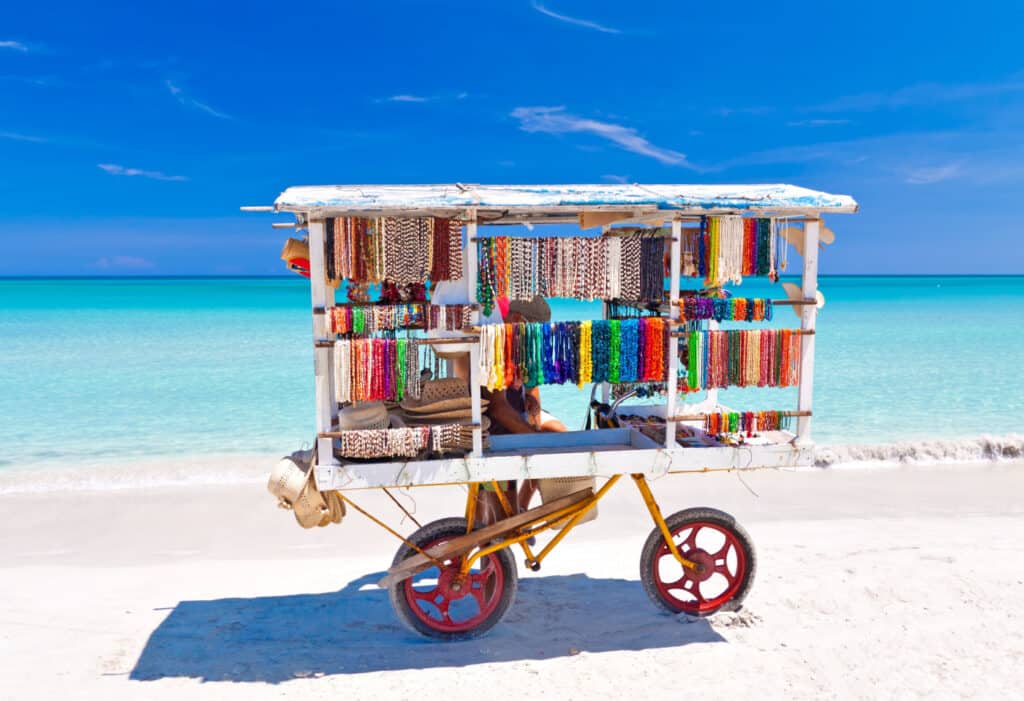
Day Eleven: Take a Trip to the Beach in Varadero
Spend the last few days in complete contrast to the rest of your trip to Cuba by visiting the largest tourist resort in the Caribbean. Located on the 20-kilometer long Hicacos Peninsula, Varadero boasts over 60 hotels (mostly all inclusive). It’s famous for its white sand beaches and is a vital part of Cuba’s tourism industry.
Playa Varadero offers all of the western comforts the rest of Cuba lacks, like public toilets as well as conveniently located cafes and beach loungers. It’s the perfect place to unwind and relax in total peace and quiet, with a mojito in hand of course!
But it’s not all beaches and cocktails. Visit the landscaped gardens of Parque Josone, the old Hershey chocolate factory, or the nearby town of Matanzas to get to know the area better.
Stay at the relaxed Casa de Betty y Jorge right in the middle of Varadero. This place has everything you need for a peaceful stay, plus there’s a great Italian restaurant next door. One of the highlights of this casa is the location, you can easily grab a bite to eat in town and head out to Varadero Beach.
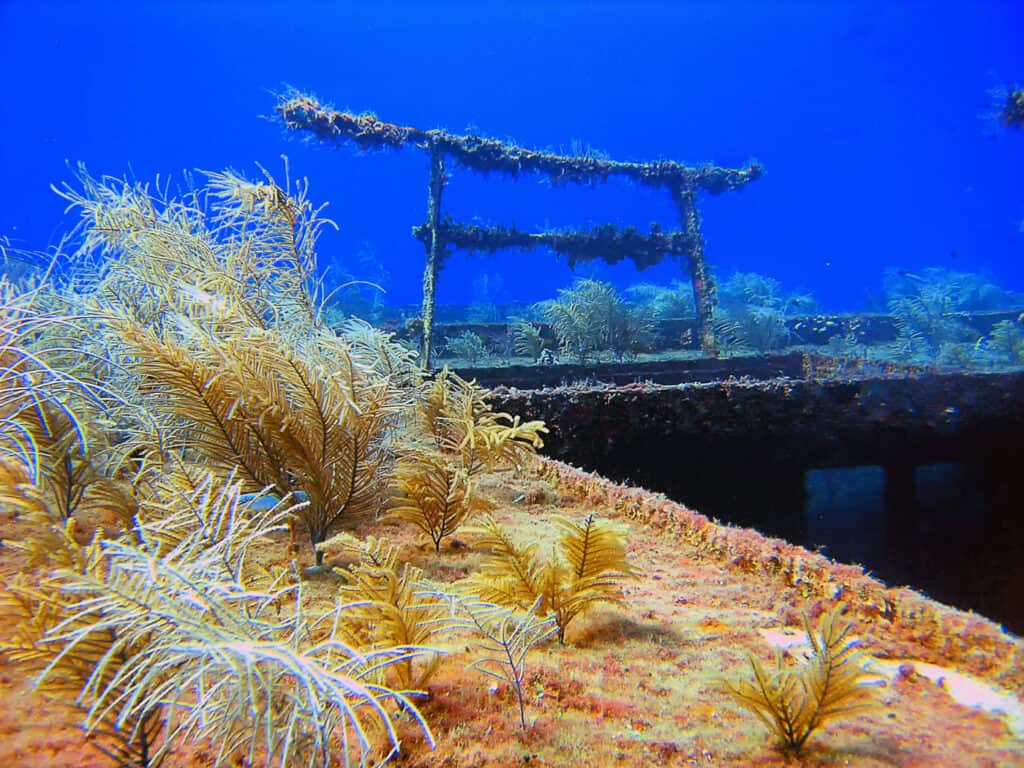
Day Twelve: Go Scuba Diving in Varadero
For me, one of the main reasons to go to Varadero is scuba diving. Visit Cayo Piedras del Norte located five kilometers north of Playa las Calaveras to dive a sunken towboat, a missile carrying gunship, an airplane and the Coral Negro yacht.
The marine park here was created during the 90’s and has since attracted a plethora of sea life. You can also snorkel some sites or take a glass bottom boat tour of the area.
There are some fantastic dive sites dotted around the many cayes and coves surrounding Varadero. Tours are easy to book from your hotel reception, and don’t break the bank either.
Fill your day with all of the underwater wonders of Cuba, this is the Caribbean after all.
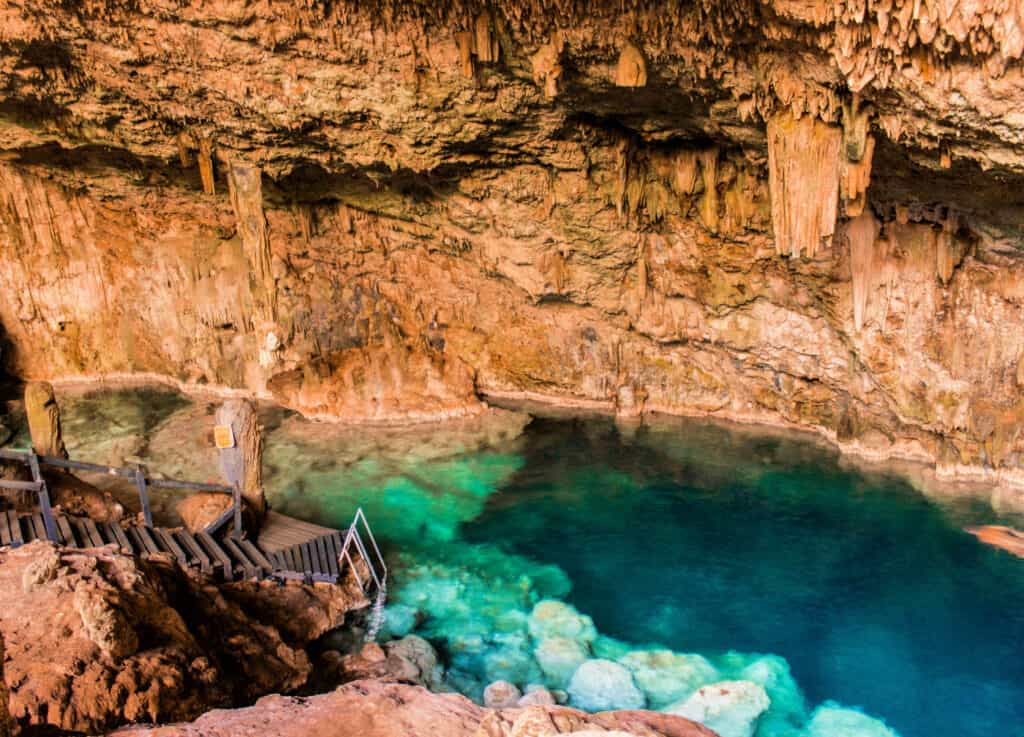
Day Thirteen: Off the Beaten Path Things to do in Varadero
If you get tired of the pristine beaches and out of this world diving, there are plenty of other things to do in Varadero too.
Visit 47 pre-Columbian cave drawings in Cueva de Ambrosio. Only recently found in 1961, they are thought to be around (an astonishing) 2000 years old. Then head to the Varahicacos Ecological Reserve to uncover 2,500-year-old human remains as well as ancient pictographs.
You can also take a day trip to explore the cenote at Cueva Saturno or visit the amazing coral reef at Playa Coral, just a 30-minute drive away in Carbonera.
The great thing about Varadero is the crowds of tourists don’t tend to leave the resorts, so you can have the beautiful surrounding area all to yourself!

Day 14 Havana: Spend the Last Night Sipping Mojitos and Salsa Dancing in Havana
Head back to Havana for a fitting end to your time in Cuba. It’s hard to fit in everything this city has to offer and there are a few extra things to do on the last day here. Visit the Almacenes San José Artisans’ Market, one of the best in the city, for local handicrafts and produce to take home as souvenirs.
After a day checking off anything you missed the first time around, get the ferry over to Casablanca. There are fantastic views over the old town, and the neighborhood feels very different to the rest of the city. My favorite spot is the Christ of Havana statue.
Visit La Cabaña de Che Guevara (Che Guevara’s modest house) and the Fort of San Carlos of the Cabin. Don’t miss the “Cañonazo”, a nightly event in which ceremonial soldiers re-enact the historical firing of the cannon that once announced the closing of the city gates. Try to arrive around 8pm for a good view as the cannon is fired at around 9pm.
Another option is to head to one of the most famous spots in Cuban musics’ history. The Legendarios del Guajirito Buena Vista Social Club is the place to be on your last night in the city. If you haven’t heard the album or seen the film don’t worry, you will be familiar with the Buena Vista Social Club by the time you leave Cuba. Eat before you arrive as the food is nothing to write home about, but the music and dancing is a great way to end your time in Cuba.
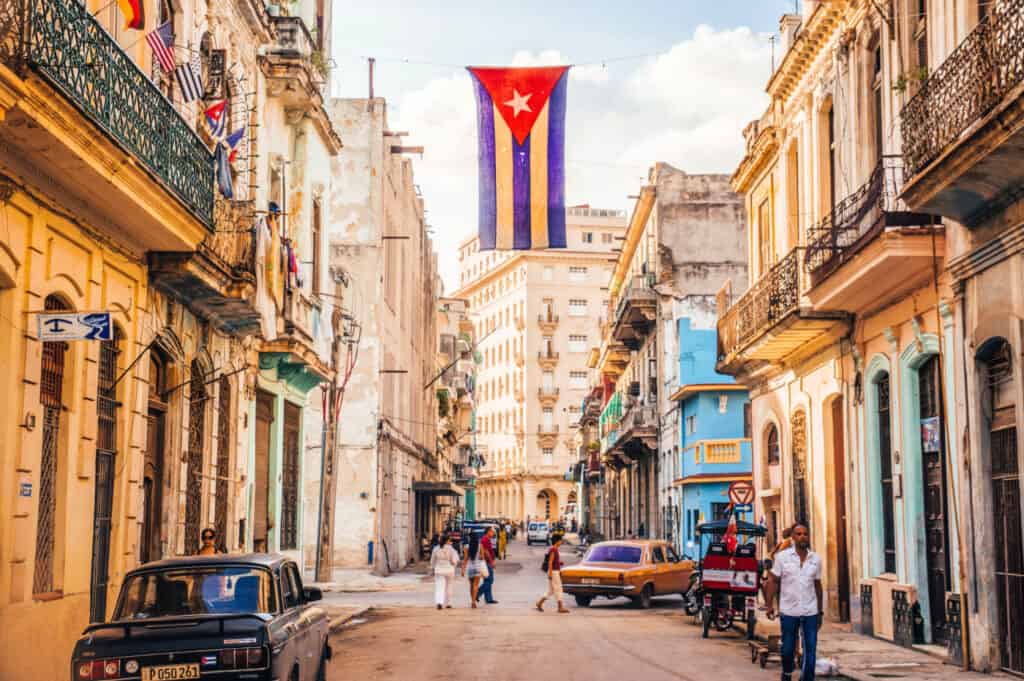
That’s How to Spend 14 Days in Cuba!
This is an easy way to spend two weeks in Cuba. Fit in some of the major sights, a few off the beaten path adventures, and some cultural highlights.
You could cut down some beach time in Varadero if you have less time or alternatively spend more time in Trinidad. But remember, if you are going it alone don’t try to fit too much in. Allow plenty of time for last minute changes and “Cuba time”, things might just take a bit longer than you were expecting!

Lauren Juliff
Lauren Juliff is a published author and travel expert who founded Never Ending Footsteps in 2011. She has spent over 12 years travelling the world, sharing in-depth advice from more than 100 countries across six continents. Lauren's travel advice has been featured in publications like the BBC, Wall Street Journal, USA Today, and Cosmopolitan, and her work is read by 200,000 readers each month. Her travel memoir can be found in bookstores across the planet.
Related Posts

How to Spend One Week in Mauritius: An Itinerary for First-Time Visitors

How to Spend Two Weeks in Belize: An Itinerary for First-time Visitors

How to Spend Three Magnificent Days in Tbilisi, Georgia: A 2023 Itinerary

How to Spend Three Perfect Days in Delhi: An In-Depth Itinerary

How to Spend Three Magical Days in Cusco, Peru: A 2023 Itinerary
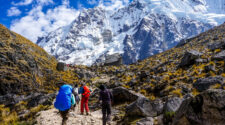
How to Spend Two Amazing Weeks in Peru: An Itinerary for First-Time Visitors
Leave a reply cancel reply.
Your email address will not be published. Required fields are marked *
5 Interesting YouTube Videos About Cuba You Have to See

5 YouTube videos about Cuba you have to see. We’ve chosen a few videos that should help you to get a feeling for Cuba. Some of them are professional and polished, and some of them are happily amateur, and yet all of them show you the many faces of Cuba in all its glory
When it comes to videos about Cuba, there’s something about watching a video of your intended destination that just makes it more real. Instead of relying upon a static image (with various filters applied to make it look even more pristine), you get to see a wandering image, one that can be compared to the human eye as you actually look around and take in all the light and beauty around you.
Chances are that you’ll upload a few your own videos when you get back from Cuba!
1. Madonna Celebrating a Birthday in Havana
The recently renewed friendly relations between the US and Cuba are well captured in this video. A certain American Material Girl celebrated her birthday in Havana. While she might be great on stage Madonna has a very ‘interesting’ salsa dancing technique.
But this is Cuba! Whether you’re famous or not, the bars and clubs of Cuba are used to visitors wanting to join in the joy of Cuban dancing… regardless of your level of skill. It’s all about having a go. While there are a huge number of dance classes geared towards foreigners wanting to hone their skills, this is not necessary. It’s rather possible that you will consider yourself to be an expert after a few Mojitos anyway, but hey… you’re on holiday.
2. Musical Icons at the Top of Their Game
Along with delicious alcoholic concoctions and cigars, the music of Cuba is an export that has been warmly welcomed by the rest of the world. Traditional Cuban music has a gentle and mournful quality that is nothing short of captivating. There’s not a huge amount of ageism in the industry unlike many parts of the world. You don’t have to be youngster in order to achieve mainstream success.
This is one of the videos about Cuba that you might have already seen, and it makes an ideal soundtrack for planning your holiday. Some of the featured musicians were well into their 80s when this recording was made, so maybe there is something about the Cuban lifestyle that leads to longevity and productivity? Perhaps this is a good reason for drinking rum on a more regular basis.
3. YouTube Videos about Cuba: View from the Top
The idea of a drone flying over Cuba might have some unsettling connotations, but remember that most drones exist for people to take selfies from a height, as opposed to those powerful military aircraft that can launch missiles while being piloted from afar. This drone footage is one of the most stunning videos about Cuba you could hope for. It’s a simple aerial view of one of the island nation’s most popular tourist hotspots – the resort beach of Varadero .
It looks like a tourism video of sorts, and yet it’s just a simple flyover which allows the natural beauty of the region to shine through. Watching this video, you can see why even the most amateur of photos and videos of Cuba look like they’ve been professionally shot for a tourism brochure. It’s easy when you have such a stunningly gorgeous model!
4. Where Those Cigars Begin Their Journey
Have cigarettes cheapened the act of smoking? You are no doubt familiar with those reviled cigarette smokers, all crammed together in their smoking areas in public places as other people stare like they’re an endangered species at a zoo. And let’s not even get started with those e-cigarette smokers, all walking around as they suck on a piece of metal.
Sure, you’re going to see cigarette smokers in Cuba, but the cigar is king on the island nation. While this is not one of those videos about Cuba that makes smoking look glamorous, but it certainly makes the whole act of creating the cigar both beautiful and soothing. Just check out that bold red dirt where the actual crops are growing! This footage was captured in Viñales, a rural paradise just a short hop from Havana.
5. YouTube Videos About Cuba: A Slice of Life in Trinidad
It can be nice to watch something that gives a broad general overview. This video simply allows the camera to take in the streets of Trinidad , a city of around 75,000 inhabitants pretty much in the geographic centre of the island. It shows the real Cuba – somewhere that is beautiful and not in the slightest bit pretentious. It gives you a great idea of what to actually expect when you come to this wondrous place, when you’re out and about and taking in the sights.
Trinidad is in fact a UNESCO World Heritage site , which gives funds that allow for much of the town to be lovingly maintained, which is evident in the footage.
BUILD YOUR OWN TAILOR-MADE CUBA TOUR ITINERARY WITH US!
- Search Please fill out this field.
- Manage Your Subscription
- Give a Gift Subscription
- Newsletters
- Sweepstakes
VIDEO: Five Things to Do in Havana
Melanie Lieberman is the senior travel editor at The Points Guy and was an editor at Travel + Leisure.
:max_bytes(150000):strip_icc():format(webp)/Melanie-Lieberman-49e4798f0cbc434e8bb59f20e01adab4.jpeg)
Cuba’s capital city is booming, thanks to loosened travel restrictions between the island nation and its northern neighbor, the United States.
If you’re looking for fun things to do in Havana, you’ll want to make time to grab a drink at El Floridita and the bar at Hotel Ambos Mundos—two of Hemingway’s favorite spots in Havana for a cocktail. His signature daiquiri (splash of grapefruit juice, no sugar) was created at El Floridita in the 1930’s. Any drink with Cuban rum is guaranteed to be good, though. Think Cuba libres, with Castro-approved tuKola, or Hemingway’s favorite mojito from Bodeguita del Medio.
The best art in Cuba can be seen on the streets, like Santeria-inspired sculptures and murals at Callejón de Hamel, or Fusterlandia: an entire neighborhood covered in José Fuster’s glittering mosaics. No trip to Cuba would be complete without listening to live music (the outdoor Tropicana cabaret is a must) or driving around in one of the iconic vintage cars, like a 1959 Buick Special.
For the local take, chat with people sitting on the Malecón, or waterfront esplanade, at sunset: or the men arguing politics and baseball at Esquina Caliente—the Hot Corner.
Related Articles

- About The Chews
- What’s In My Travel Bag?
- Travel Tips
- Destinations
5 Days in Cuba: Your Complete Travel Itinerary
- March 20, 2024
Disclosure: This post may contain affiliate links, which means we’ll receive a commission if you purchase through our links, at no extra cost to you. Please read full disclosure for more information.
Have you been considering a trip to Cuba? I have you covered with the best way to spend 5 days in Cuba.
Cuba, the largest island in the Caribbean, sits just 90 miles from the United States.
Positioned between the Bahamas and Jamaica, it’s not your typical Caribbean escape - it’s a deep dive into a unique culture.
Get ready to step outside of your comfort zone to truly experience the heart and soul of this island, where every corner tells a story and every moment is a chance to learn and connect.
Tourism plays a significant role in Cuba’s economy, turning your visit into a means of supporting local communities.
The Cuban people, known for their kindness and resilience, welcome you to explore the diverse landscapes, from lively cities to tranquil beaches and picturesque valleys.
And while we’ll certainly dive into the classic Cuban cigars, mojitos, and daiquiris, this article will uncover a wealth of experiences beyond the iconic favorites.
I traveled to Cuba last November, tracing the history of Havana, wandering through the vibrant streets of Trinidad, and discovering the natural wonders of Vinales.
With this firsthand experience, I’m sharing practical tips and insights for those planning a 5 day trip to Cuba.
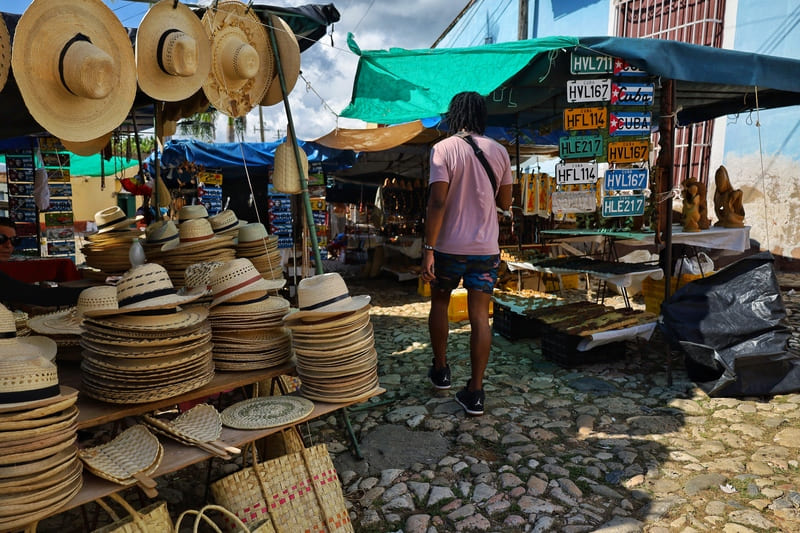
If you’re looking for genuine recommendations and guidance to maximize your trip, I’m here to help you navigate this culturally rich destination.
Keep reading to see exactly how you can travel through Cuba in 5 days!
Planning Your Next Trip?
🤩 Discover all the must-know tips before visiting Cuba > Explore Cuba Travel Guide
🤩Find cheap flights and get cashback > WayAway
🤩 Book affordable hostels > HostelWorld
🤩 Get the best carry-on bag > GOT Bag
🤩 Pack lighter with this > Cosy Collection Neck and Bag pillow
🤩 Explore ways to maximize hotel points > Awayz
🤩 Easily learn the local language > Babbel
🤩 Protect your online security abroad > ExpressVPN
🤩 Get the best travel shoe & travel jacket > TropicFeel
Table of Contents
How Do You Get to Cuba from the US?
Getting to Cuba from the United States as an American is a bit different than other Caribbean destinations - it’s the only one that asks for a visa.
If you’re an American, you’ll need a Cuban tourist card, and you can get one at the airport or conveniently order it online in advance through Easy Tourist Card .
Remember, if you’re a U.S. citizen, they won’t let you board your flight to Cuba without this card.
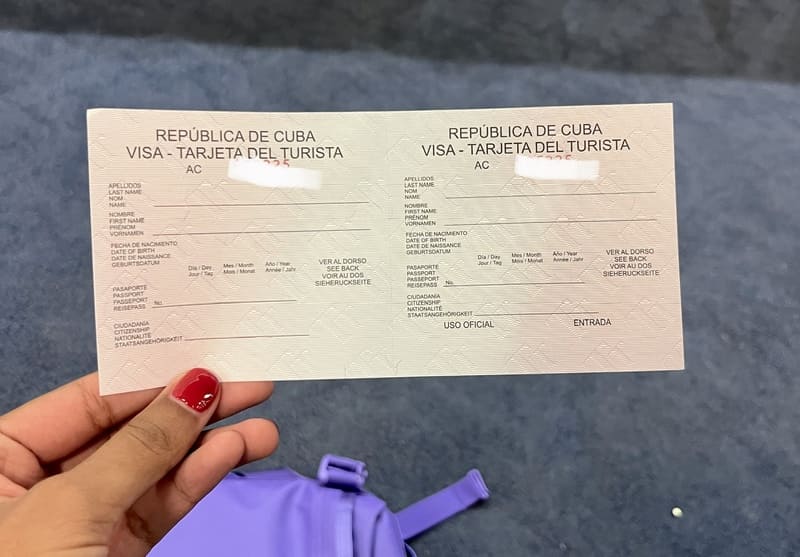
Major U.S. airlines offer flights to Cuban cities. We opted for American Airlines and flew into Havana.
Keep in mind that health insurance coverage in the area is a must for anyone heading to Cuba.
American Airlines included the necessary health insurance as part of our ticket costs.
Be sure to double-check the fare, taxes, and fees section when purchasing your flight for health insurance details.
If you are uncertain about whether insurance is included, contact the airline directly for clarification and guidance on the next steps.
We also had to complete the required health screening form in advance of our flight, as well.
You may also need to show this health form upon landing in Cuba.
It’s a good idea to bring screenshots of all your important documentation since you may not have phone service as soon as you arrive in Cuba.
For a detailed, step-by-step guide on entering Cuba as an American and handling all the necessary steps, check out our comprehensive article that covers all the details.
RELATED ARTICLE: Ultimate Weekend in El Salvador Itinerary
DAY 1: A Day in Havana
In this itinerary, I’ll take you through our experiences in Cuba and provide insights into what you can explore and enjoy during your trip.
Arrival in Havana
Arriving in Havana marks the beginning of your Cuban adventure.
As your plane touches down at José Martí International Airport , the first step is navigating through Cuban customs.

While still at the airport, you should exchange a portion of your currency for Cuban pesos.
This initial exchange will be useful to purchase a Wifi card, which is important to have if you plan to stay connected during your travels.
Upon landing in Cuba, phone service and Wifi will not be readily available.
The Wifi card can be bought with cash at the airport.

In order to use your Wifi card, you have to find a designated Wifi area.
If this sounds any bit confusing, we give you the full rundown on exactly where to get a Wifi card and how to use the Wifi card inside our “ Explore Cuba Travel Guide .”
Given restrictions on car rentals for Americans in Cuba, we found shared taxis, known as colectivos, to be the most convenient mode of transportation.

In our guide , we provide our trusted colectivo driver recommendations and bus options to facilitate seamless transportation from the airport to your accommodation and beyond.
RELATED ARTICLE: Is Spirit Safe to Fly?
Havana Casa Particular
Once you leave the airport, you’ll be checking into your “casa particular.”
This accommodation involves staying in the private homes of local Cubans.
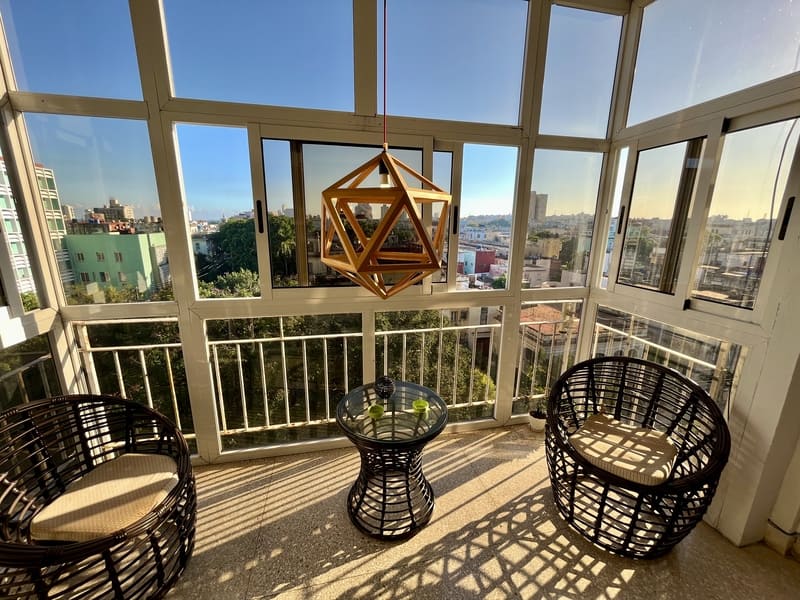
Whether you choose a separate rental or a shared space in their home, staying in a “casa particular” is a requirement for American visitors under the “Support for the Cuban People” visa category.
When you meet your casa particular host, you should ask about currency exchange, as they might offer you a more favorable rate.

However, be aware that, during our visit, many places preferred USD over the local currency, and in some instances, they didn’t accept their own currency.
For this reason, it’s not advisable to exchange a large amount of your cash, and it’s a good idea to discuss the preferred currency with your host beforehand.
Keep in mind, that American credit cards and debit cards do not work in Cuba, so cash will be king.
Now that you’ve gotten a chance to settle into your casa particular, get ready to experience the authenticity of Havana, the largest city in Cuba.
Havana welcomes you with classic cars, weathered buildings, lively streets, and a unique blend of history and culture.

RELATED ARTICLE: Step-By-Step on How to Get to Machu Picchu Without Hiking
Revolution Square (Plaza de la Revolucion)
As you explore Revolution Square, you’re bound to see the Ministry of the Interior building and Communications building, characterized by massive steel murals of revolutionary leaders (ie. Che Guevara) on their facades.
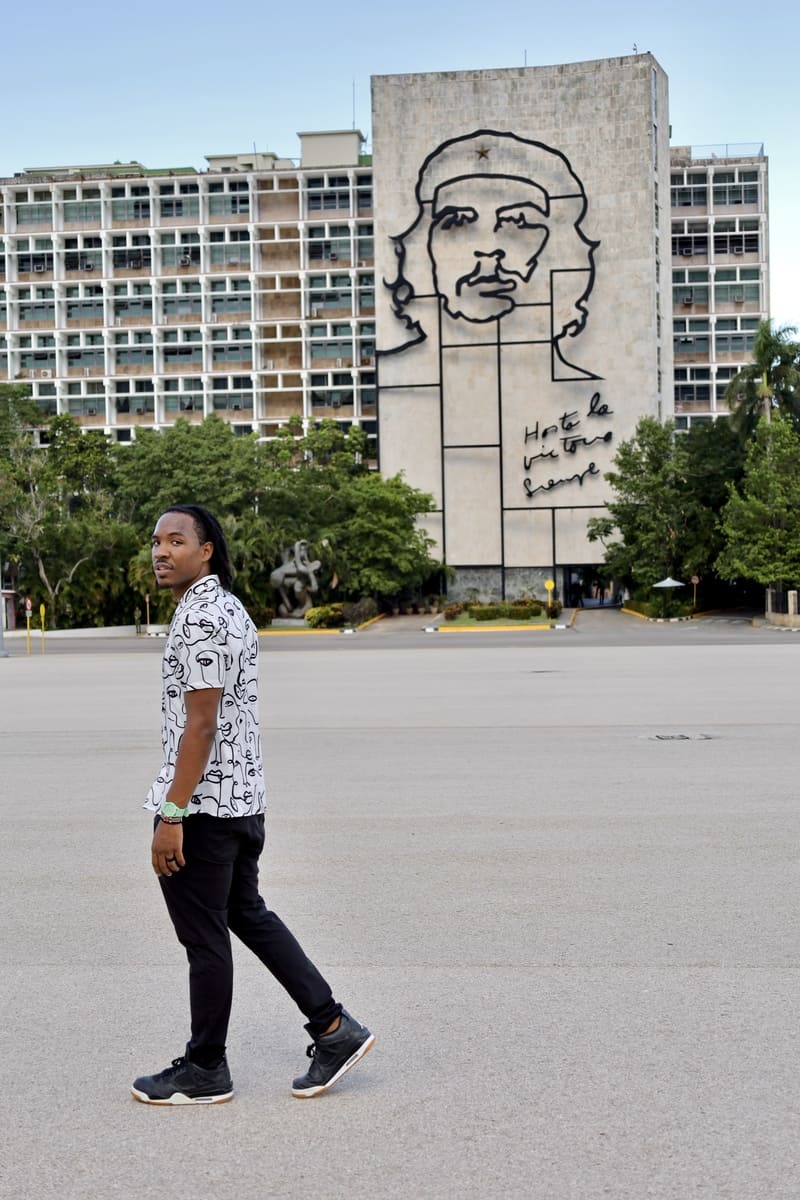
These iconic structures not only contribute to the square’s historic and political ambiance but also serve as powerful symbols of Cuba’s revolutionary spirit.
As you walk through the streets surrounding Revolution Square, you’ll likely come across charming local restaurants, offering a small taste of Cuban cuisine.
It’s essential to manage your expectations, as some restaurants may not have every item listed on their menus.
Everything is rationed in Cuba, so be mindful of that.
Engage with the friendly staff and ask about available food items so you can be sure of your meal options.
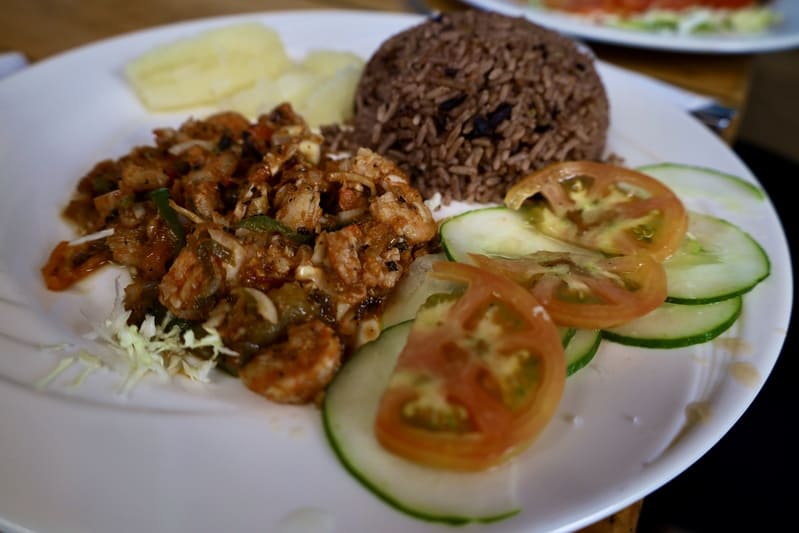
Cuban restaurants operate within the constraints of limited resources, and understanding the concept of rationing is crucial for you to gain insight into the daily realities of life on this historic island.
RELATED ARTICLE: Where to Find Authentic Aruban Food
El Cristo de la Habana
Head to the Christ of Havana (el Cristo de la Habana) for a breathtaking sunset experience.
This big statue of Jesus looks over Old Havana (Havana Vieja) and the water, creating a stunning view.

When I went, there were lots of people singing and dancing.
If you walk down a bit from the hill, there's a truck selling coco frio (cold coconut water in a coconut) which is a refreshing treat.

Continue walking towards the water, and you’ll spot a ferry, the most budget-friendly way to return to Old Havana.
But, if figuring out a ferry isn't your thing, or you'd rather not take a boat, you can also arrange a ride with a colectivo driver beforehand.
RELATED ARTICLE: Is Turks and Caicos Expensive?
Plaza Vieja
As you walk through Plaza Vieja in Old Havana (Habana Vieja), you can’t help but notice all the many restaurant options in this area for dinner.

For more food guidance, we have included over 30 restaurant recommendations in our “ Explore Cuba Travel Guide ” so you can find the perfect spot that suits your tastes.
After dinner, treat yourself to some delicious gelato from Pistacchio Havana.
Continue down to Avenida del Puerto for the final activity of the night.
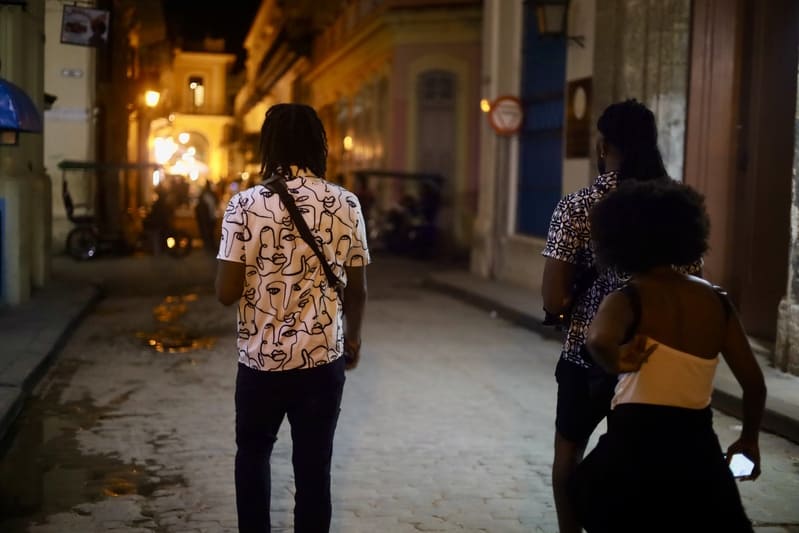
RELATED ARTICLE: How to Visit La Fortuna on a Budget
Havana Cannon Fire
Every night at 9 pm there is a cannon that fires off at Fortaleza de San Carlos de la Cabana (Fort of San Carlos of the Cabin) which is near el Cristo de la Habana.
You can get a view of this happening from across the water near the Malecon. It happens at 9 pm sharp.
Arrange your transportation ahead of time or head back towards the main plaza to get a colectivo back to your casa particular for the night.
DAY 2: Vinales Day Trip from Havana
Navigating Cuba as a tourist can be challenging, but experiencing the country from the perspective of a local adds a whole new dimension.
We had an exceptional day trip from Havana to Vinales with Alizandra who is a Cuban native with excellent English speaking skills.
She doesn’t hold back on lesser-known facts about life in Cuba, and she provides you with a better understanding of the Cuban way of life.
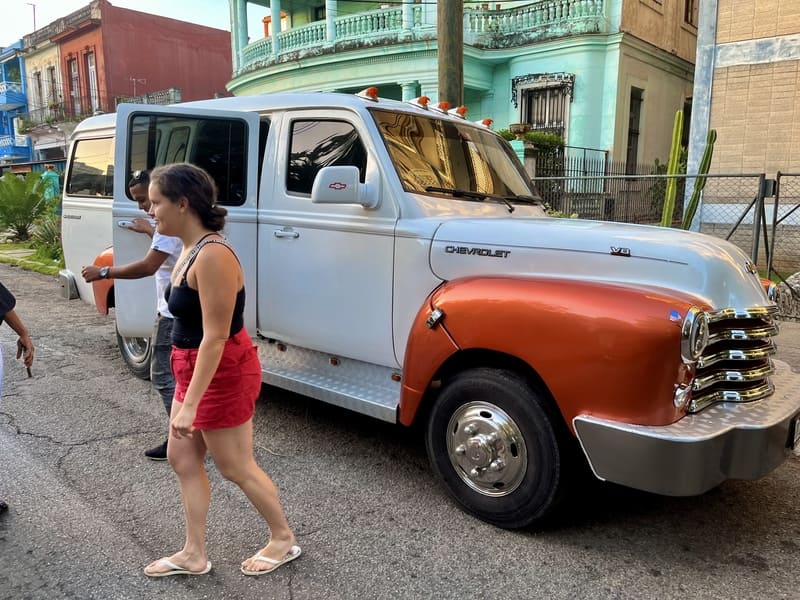
Alizandra not only coordinated our entire trip from Havana to Vinales, including transportation, entrance fees, and food recommendations, but she also became more than just a tour guide - a genuine friend.
Vinales is a UNESCO World Heritage Site and a must-visit during your 5 day trip to Cuba.
RELATED ARTICLE: 4 days in Puerto Rico: Lajas, Guanica, & Cabo Rojo
Cueva del Indio (Indio Cave)
Our day trip with Alizandra kicked off with a visit to the captivating Cueva del Indio after we stopped for breakfast.
Picture an amazing boat ride winding through ancient caves adorned with prehistoric drawings.
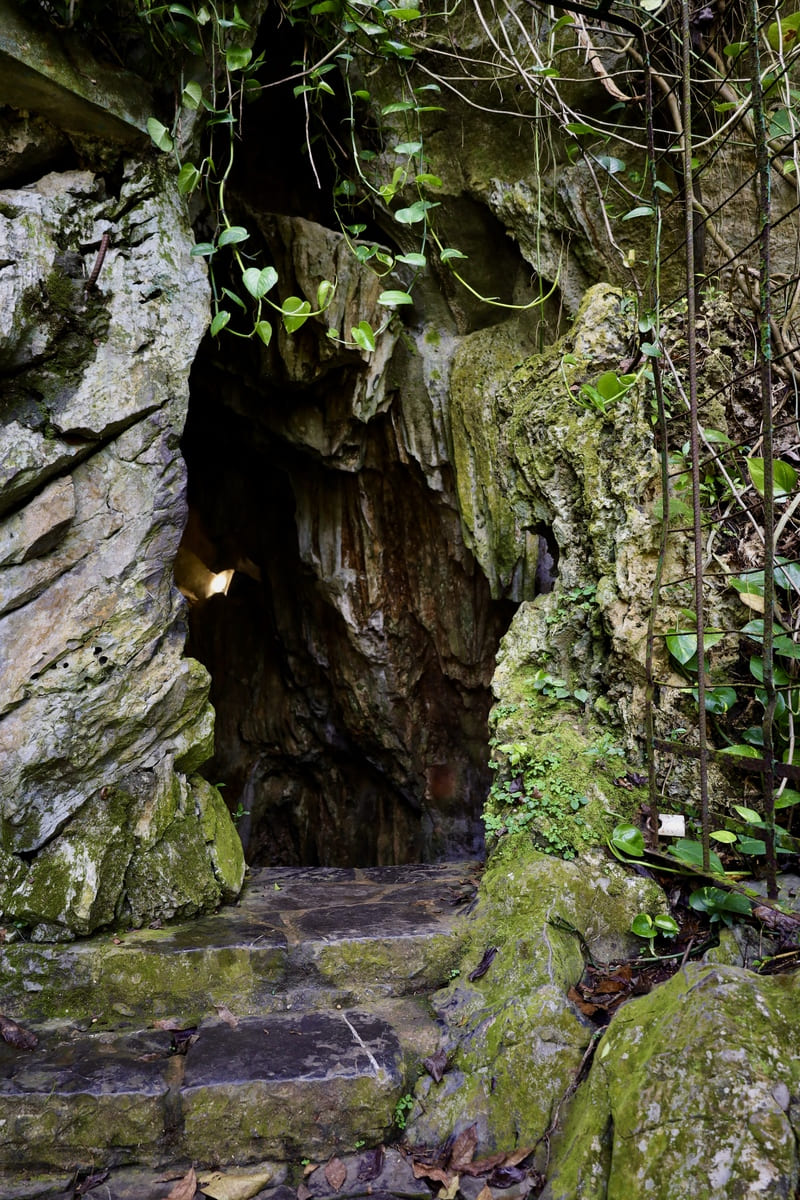
The boat guide flashes his light to make sure you don’t miss a single detail of those fascinating drawings on the cave walls.
It’s like stepping back in time as you cruise down the San Vicente River before heading toward the end of the cave and emerging from this incredible underground adventure.
Once you get off the boat, tables are set up with all sorts of souvenirs to check out. Don’t miss the chance to grab a refreshing cup of sugar cane juice before you head out, too.

RELATED ARTICLE: Top Travel Mistakes to Avoid
Vinales Tobacco Farm
Now it’s time to explore the heart of Vinales with a visit to a local tobacco farm - a must during your 5 days in Cuba.
Get ready for a unique horse riding tour through the farm, soaking in the beautiful views.
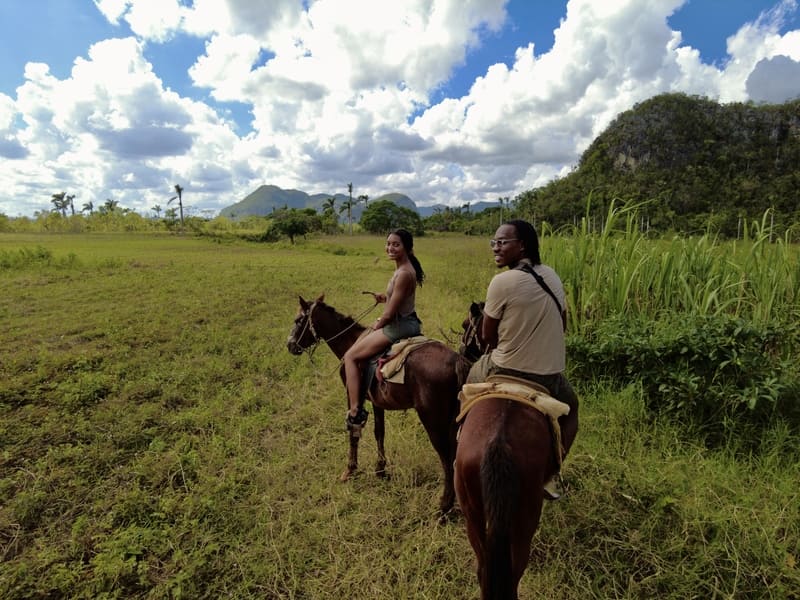
Whether or not you’re into horseback riding, you’ll learn all about how they grow tobacco and other crops at the farm.
The best part? You’ll learn the art of rolling Cuban cigars and picking up the tricks from the experts.
You’ll also hear all about the farm’s history and the stories behind these special tobacco leaves.
There is also an opportunity to purchase Cuban cigars directly from the locals here.
Just keep in mind that there are limitations to what you can bring back to the United States .

RELATED ARTICLE: Best Things to Do in Lajas Puerto Rico
Mural de la Prehistoria
El Mural de la Prehistoria (prehistory mural) is exactly as it sounds.
It is a massive mural depicting prehistoric times.
It was painted in 1960 on a towering mogote that reaches 160 meters and is a significant attraction in Vinales.
This vibrant mural illustrates dinosaurs co-existing with humans, and it is an awesome sight to see.
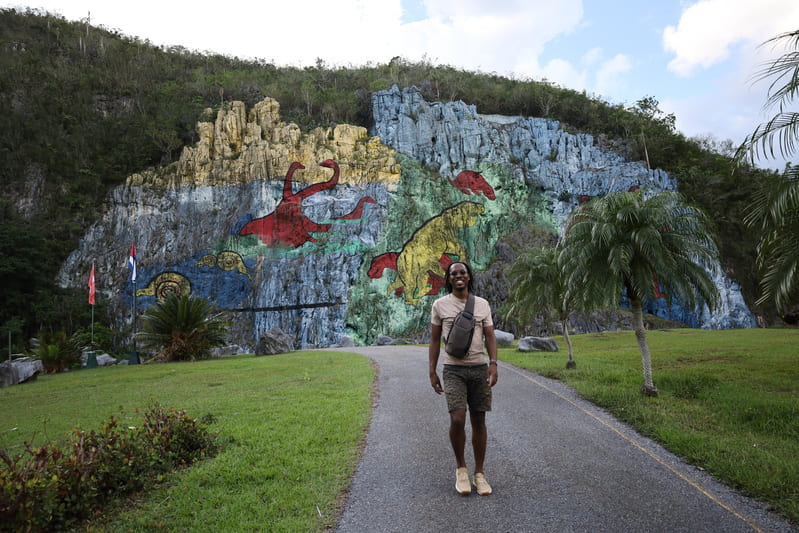
After taking pictures here, we went on to lunch at El Sabor Kirenia nearby and had an excellent family-style meal before heading back to Havana.
The journey back to Havana was filled with engaging and highly informative conversations with Alizandra.
Night in Havana
After a full day of exploring Vinales with Alizandra, you can grab a quick dinner in Old Havana before heading to your casa particular to rest up for tomorrow’s early adventure.
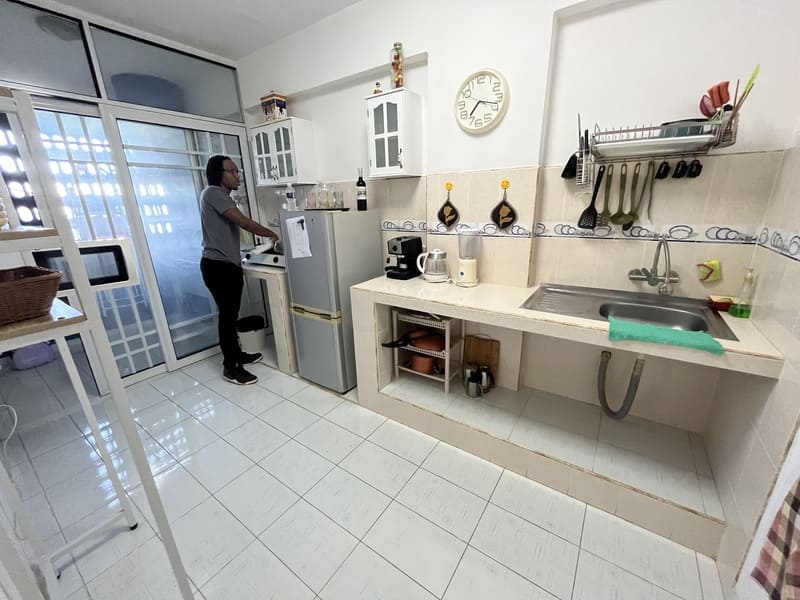
RELATED ARTICLE: Panama Trip Planning Tips
DAY 3: Havana to Trinidad Cuba
If you’re seeking a standout destination in Cuba, look no further than Trinidad.
It is one of the oldest cities in Cuba, and our personal favorite.
This Spanish colonial gem has charming cobblestone streets, picturesque beaches, vibrant buildings, and tucked-away waterfalls.
Recognized as a World Heritage Site since 1988, Trinidad’s historical significance in the sugar trade adds to its allure and makes it a destination rich in both beauty and heritage.
How to Get to Trinidad from Havana
Start your day early for the journey to Trinidad from Havana.
We had it all sorted with a colectivo arranged to take us.
We set out in the morning and smoothly reached Trinidad five and a half hours later in the afternoon.
While the ride might sound like a lot , it turned out to be the best opportunity to bond with our group.
We went to Cuba with @ whereisbree , @ barringtonodyssey , @ flyingphirstklass , and @ trini_dondada .

Even though we were already acquainted as creators from Instagram, our first in-person meeting was on this trip!
The extended journey from Havana to Trinidad turned out to be the perfect setting for authentic friendships to grow.
Chew Tip: Group travel not only fosters friendships but also allows for cost-sharing—an added perk to enhance your experience. #SeeTheWorldSaveADollar
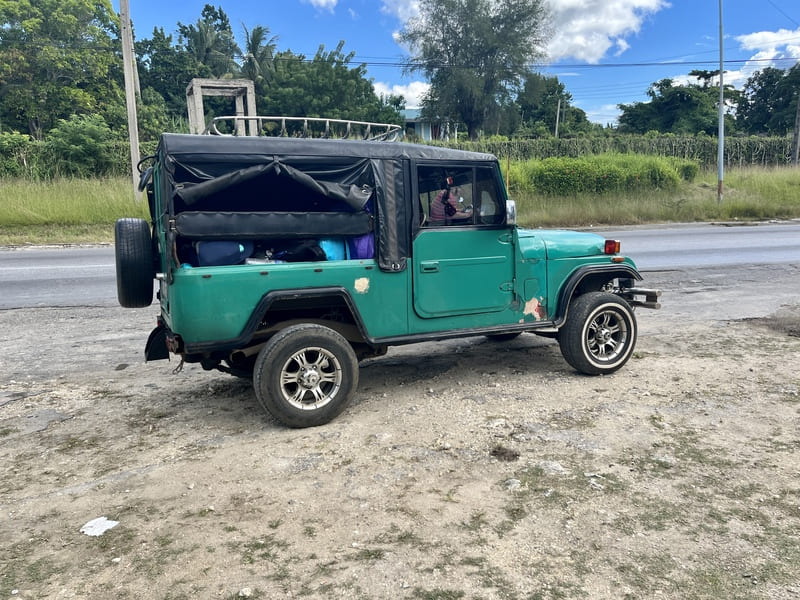
For those planning their own venture from Havana to Trinidad, our “ Explore Cuba Travel Guide" offers essential insights into bus costs, routes, and schedules, providing practical information for a seamless road trip.
The guide also features contact information for our personal drivers, ensuring you have the necessary tools for a memorable and well-organized adventure.
Trinidad Casa Particular
In Trinidad, you can find comfortable and spacious choices for casa particulares.
Our 3-bedroom stay even served breakfast in the morning.
Once you check in, drop off your things, and freshen up a bit, it’s time to step out, grab a bite to eat, and explore the surroundings.
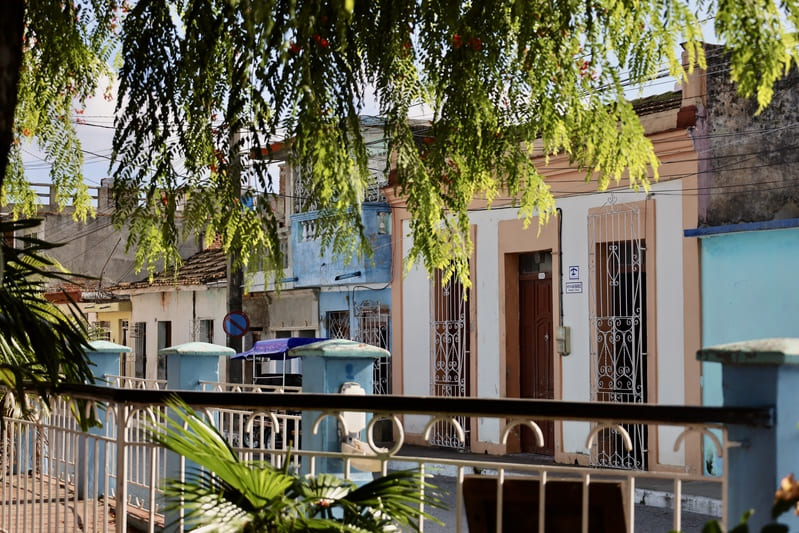
Playa Ancon
Playa Ancon, or Ancon Beach, stands out as one of the most beautiful beaches in Trinidad, Cuba.

When it comes to getting to Playa Ancon, mastering a bit of Spanish can be a game-changer, especially when negotiating a colectivo.
Having a grasp of the language not only adds to the richness of your Cuban experience but also opens doors to more affordable transportation options.
Colectivos are a popular means of travel in Cuba, and being able to communicate in Spanish puts you in a favorable position during negotiations.

Locals appreciate the effort to speak their language, and it often leads to a friendlier exchange.
By investing in learning some key Spanish phrases , you not only enhance your travel experience but also empower yourself to navigate the local transportation system more efficiently.
Once you arrive at Ancon Beach, enjoy the calming waves and unwind on this beautiful beach.
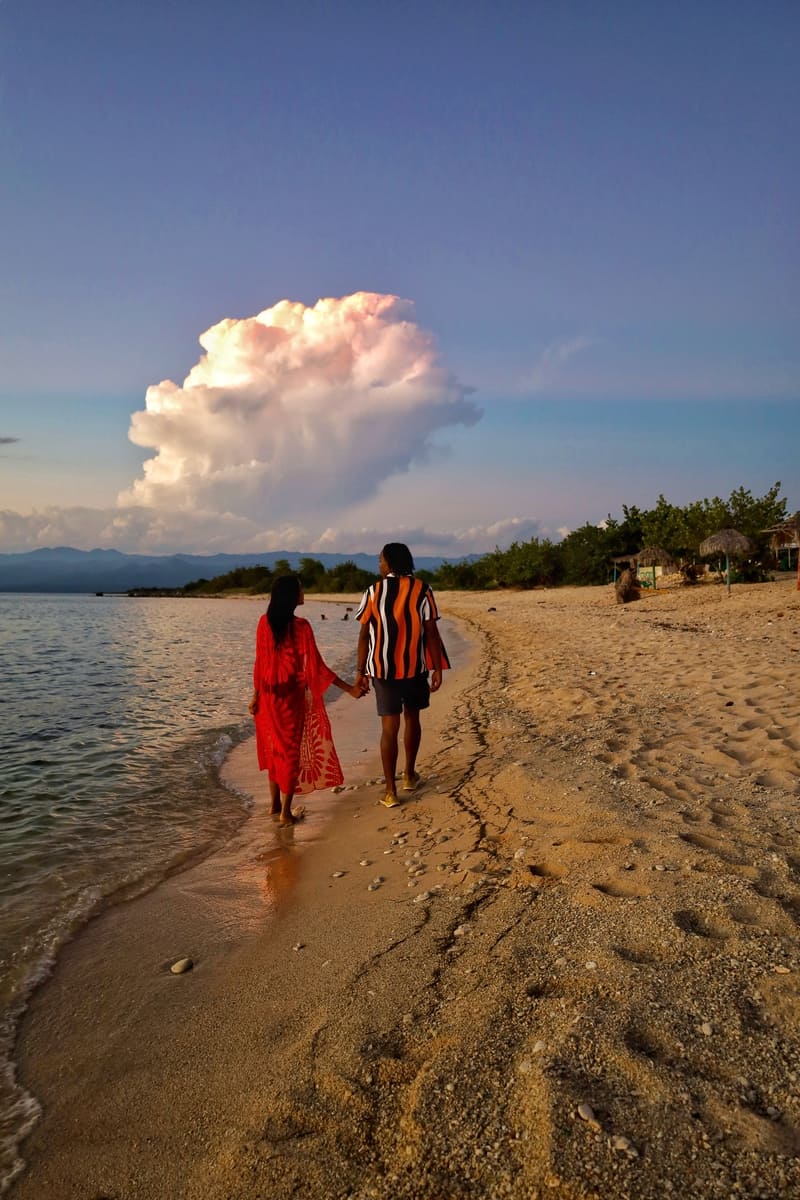
Catch the sunset, and take it easy before heading out for dinner in Trinidad.
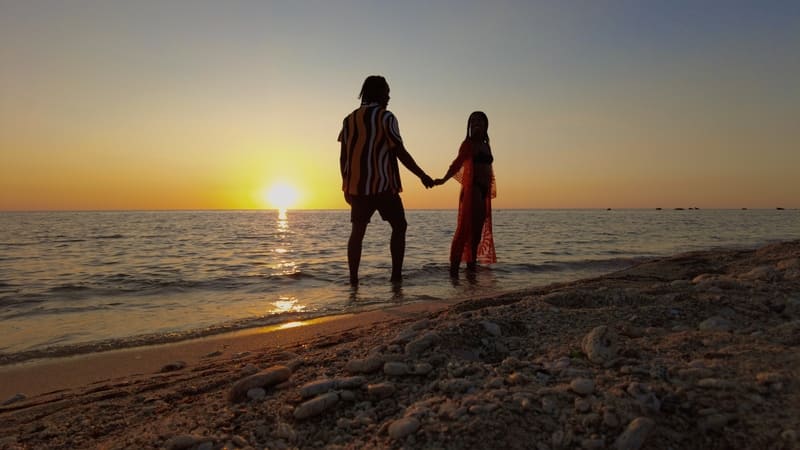
Trinidad Cuba Nightlife
As the sun sets, the night is barely just beginning in Trinidad. Get yourself to Casa de la Musica for a round of salsa dancing to live music.
And yes, you should definitely jump in!
Afterward, make your way to Disco Ayala, a cool nightclub tucked inside a cave.
It’s a one-of-a-kind experience with a mix of energetic locals and fellow travelers.
Enjoy the moment before heading back to your casa particular for a cozy night’s rest.
DAY 4: Trinidad, Cuba
We started our morning with a delicious breakfast at our casa particular in Trinidad.
You’ll want to eat well because you’re in for an adventure today.
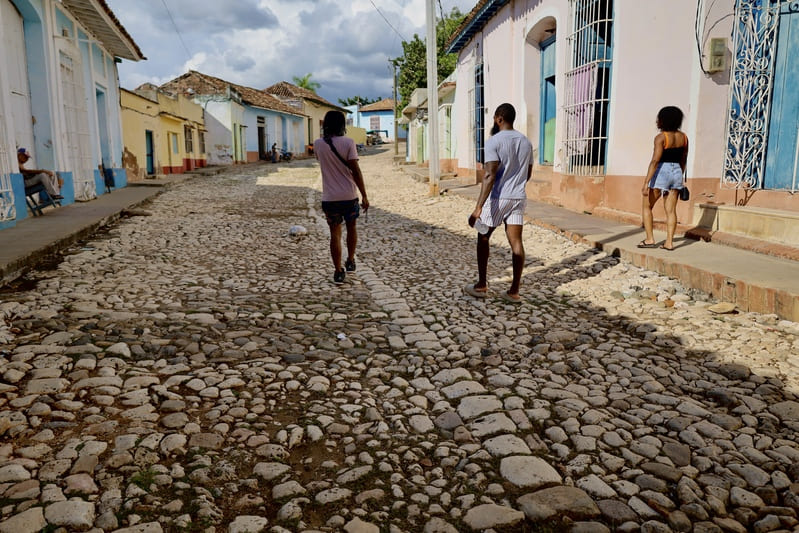
Javira Waterfall
Hop in a colectivo to El Cubano Natural Park - the starting point for your hike to Javira Point Waterfall.
The trail is pretty straightforward but includes a river crossing.
But here is where it gets interesting with money. We had exchanged a lot of USD for Cuban pesos, ready to pay at the park entrance.
Surprisingly, they wouldn’t accept their own currency. With American credit cards not working in Cuba, we faced a dilemma.
Luckily, a European tour group arrived at the same time, and they kindly used their credit cards for our entrance fee, and we reimbursed them in Cuban pesos.
Quick tip: if you’re American, bring USD to Javira Waterfall.
The waterfall is incredible and worth the easy 1.5-mile (2.5 km) hike.
RELATED ARTICLE: Ultimate Guide to Pulhapanzak Waterfall

The water is refreshingly cold for a swim, and there’s a cool spot at the top of the hill to jump into the water.
While my husband and friends explored deep into the cave, I preferred recording the adventure since cliff-jumping wasn’t my thing.
They provide life jackets on-site which is great because the water gets deeper near the waterfall.
I can swim, but it’s always nice to chill with a life jacket.
The 45-minute walk back dries you off quickly, thanks to the hot Trinidad weather.
After the waterfall experience, arrange for your colectivo driver to take you to a nearby spot for some food.
RELATED ARTICLE: Everything to Know About San Ramon Waterfall
Playa Maria Aguilar
Discover another beautiful beach to unwind and soak in the peaceful views at Maria Aguilar Beach (Playa Maria Aguilar).
There’s a bar where you can grab some drinks here, as well.

RELATED ARTICLE: Ultimate Things to Do in Paracas
Plaza Mayor
Post-beach relaxation, we went back to our casa particular to freshen up, then made our way to the heart of Trinidad - Plaza Mayor.
Our quest for a delicious dinner led us to the rooftop restaurant, Bistro Trinidad where we had traditional daiquiris and mojitos.
Afterward, we swung by La Canchanchara to try out another traditional drink - la canchanchara which is a combination of rum, lime, and honey.
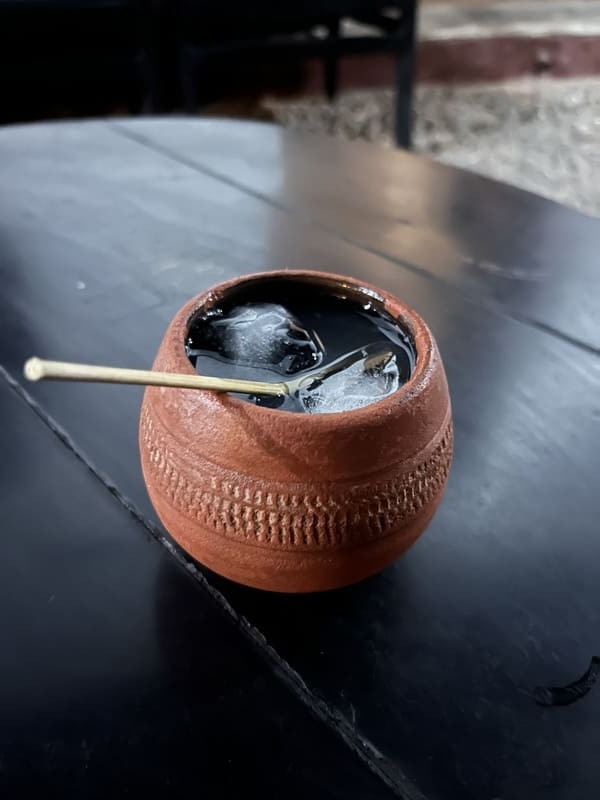
We strolled through the charming streets around Plaza Mayor before wrapping up the night at our casa particular.
RELATED ARTICLE: Free Things to Do in Peru
DAY 5: Trinidad to Havana
This morning marked our last breakfast at the Trinidad casa particular, and we couldn’t resist grabbing some delicious fish sandwiches from the stand around the corner for the road.
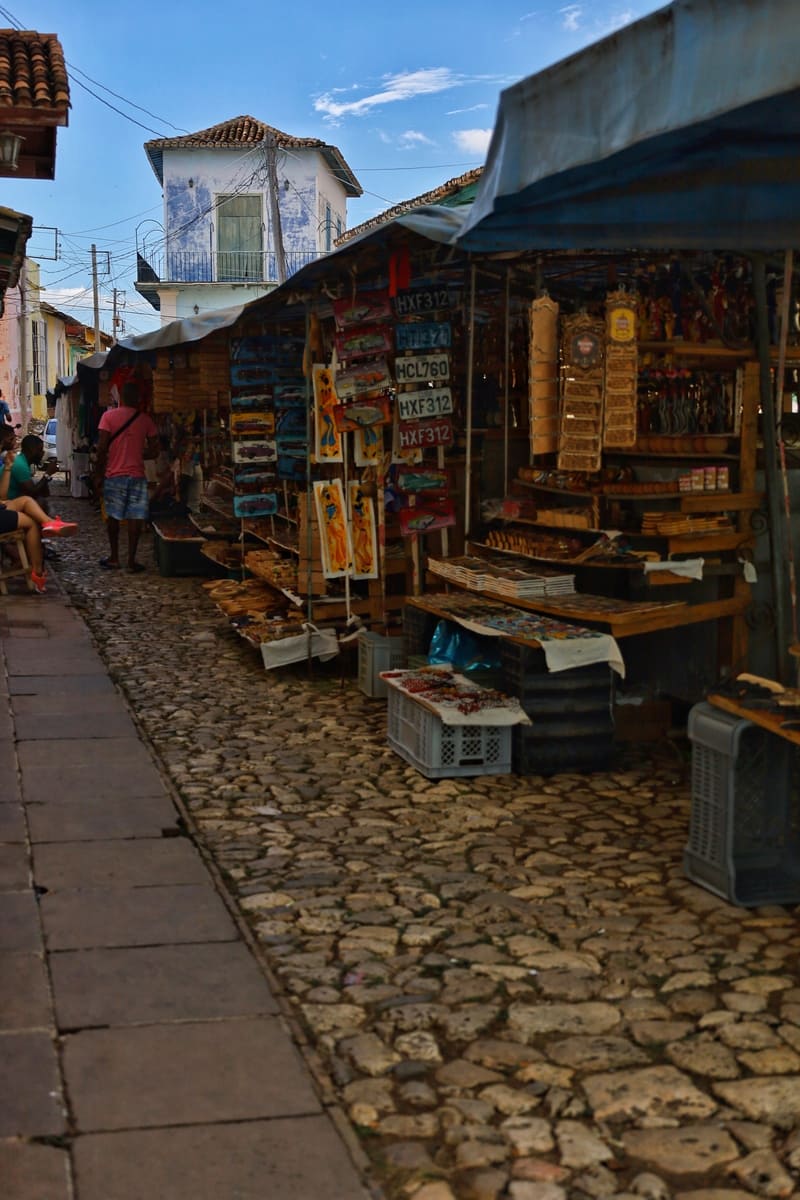
With an early start, we headed on another 5.5-hour road trip back to Havana from Trinidad – granting us plenty of time for more close bonding along the way.
We walked around the National Capitol, resembling the US Capitol building.
Lunch led us to El Dandy, a quaint spot. Just be sure to check what’s available before diving into the menu.
Just up from El Dandy, we stumbled upon a basketball court.
My husband took it back to his college basketball days and joined in a game with the locals.
Across from the court was Pistacchio Havana Gelato, so another round of gelato was a must before a leisurely walk to Callejon de Hamel.
This street features a narrow alley in Havana adorned with vibrant murals and sculptures crafted from bathtubs, hand pumps, and pinwheels.
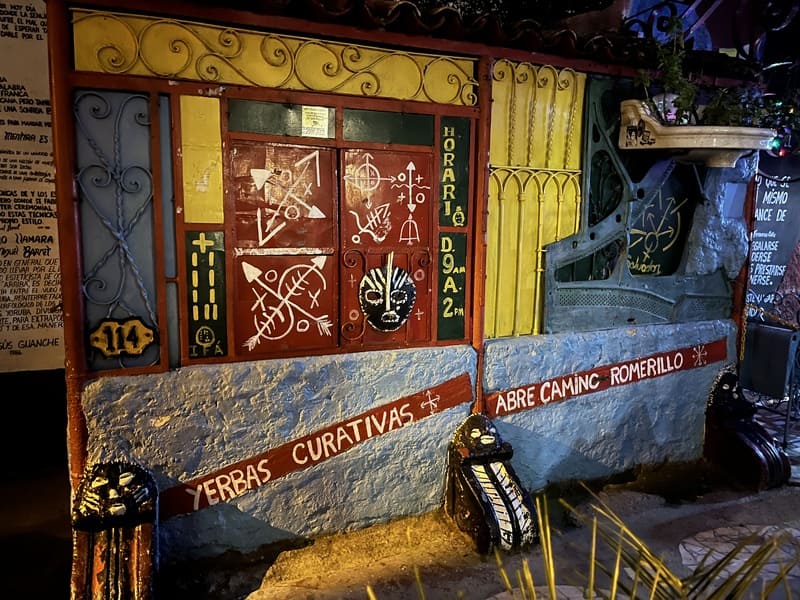
It provides a glimpse into the local art scene of Cuba’s capital.
It’s incredible to see renowned Cuban artist Salvador Gonzalez Escalona’s abstract Afro-Cuban artistic style.
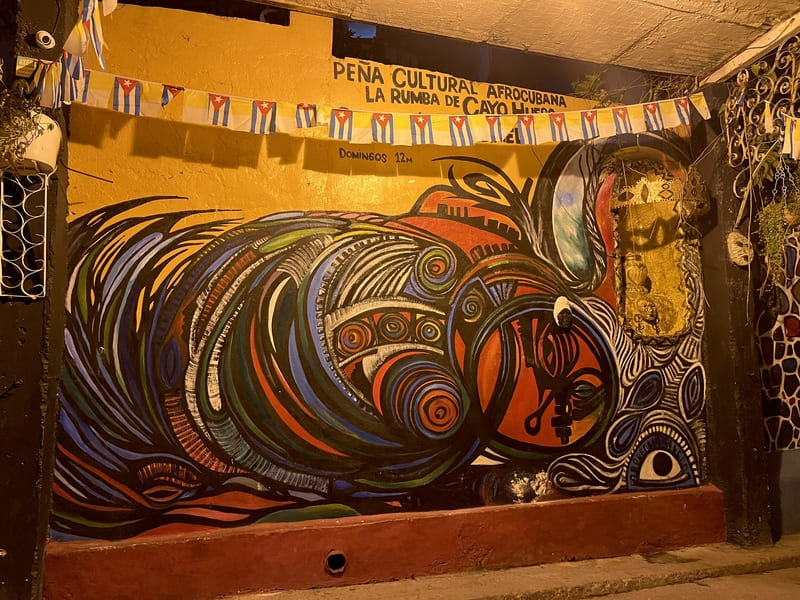
Afterward, we made our way back to our Havana casa particular to make sure we were fully packed and ready for a very early morning departure to the airport.
RELATED ARTICLE: What to Do in Huacachina
Tips for 5 Days in Cuba
- Entry - Make sure you have a valid passport, complete the required health screening forms, and apply for your tourist visa in advance or at the airport before you board your flight.
- Documents - Keep screenshots of important documents including health forms, and the address of your casa particular.
- Internet Access - Purchase a Wifi card for internet access in designated areas. Be prepared for a more unplugged experience in Cuba since you may not always be in a Wifi zone. Be sure to download offline Google Maps before getting to Cuba so you can more easily navigate the country.
- VPN - Many websites (including Airbnb ) are blocked in Cuba. If you use a VPN you can gain access to different restricted websites and apps. Just be sure to download the VPN prior to getting to Cuba, and the VPN works as long as you are connected to Wifi.
- Transportation - Colectivos (shared taxis) and Viazul buses are popular modes of transportation. Confirm the price of your colectivo with the driver before getting into one. Plan your routes and book in advance, especially for longer journeys. Check our “Explore Cuba Travel Guide ” for colectivo drivers and info on the bus systems. Keep in mind that Americans can't rent cars in Cuba.
- Accommodation - Book your casa particular in advance for an authentic Cuban experience. If you're an American traveling to Cuba on a support for the Cuban people visa, technically you are required to stay in a casa particular. We have over 30 recommended casa particulares included in our “Explore Cuba Travel Guide .”
- Food - Set realistic expectations for food. While you can find good places to eat, keep in mind that the availability of options may be limited due to food rations in Cuba. It's a good idea to ask the available choices before getting too excited about the menu.
- Currency - Be aware that American credit cards and American bank cards are never accepted. While Cuban pesos are the local currency, there's a preference for euros for USD. It's advisable to bring sufficient cash for your entire trip since accessing ATMs will not be an option for withdrawals if you are American.
- Medication - Leveraging my experience as a pharmacist, I'd highly recommend packing enough of your prescribed medications and any over-the-counter (OTC) meds you might need. Keep them in their original containers, and bring enough to account for any travel delays. This way, you'll be well-prepared for any unexpected situations, especially considering the limited availability of medications in Cuba.
- Cultural Respect - Embrace the rich cultural diversity in Cuba, which is likely different than what you are used to. Instead of passing judgment, take the time to understand and appreciate local ways of life. Keep an open mindset and always show respect as you explore.
RELATED ARTICLE: What Not to Miss in Peru
5 Days in Cuba FAQs
Yes, you can go to Cuba for 5 days, especially if you want to explore one city. Be sure you have the required visa or tourist card.
The ideal duration for a Cuba trip depends on your preference. Many find 6-10 days sufficient for a well-rounded experience.
Budgets vary, but bringing $100 USD per day is a reasonable estimate for accommodation, meals, and activities.
Cuba is safe for tourists, with a low crime rate and strict regulations on weapons and drugs. We felt secure throughout our 6-day trip.
Explore Cuba Travel Guide
We have carefully curated a wealth of itinerary ideas tailored to major destinations throughout Havana, Trinidad, Vinales and Varadero in our comprehensive 31-page “ Explore Cuba Travel Guide .”
Dive into over 80 insightful suggestions covering everything from must-visit attractions to hidden gems.
What sets our guide apart is its thoughtful organization by budget, empowering you to make the most of your journey while keeping your wallet happy.
See the World and Save a Dollar with the valuable insights and practical tips found in our “ Explore Cuba Travel Guide. ”
Your Cuban experience is about to get even more extraordinary!
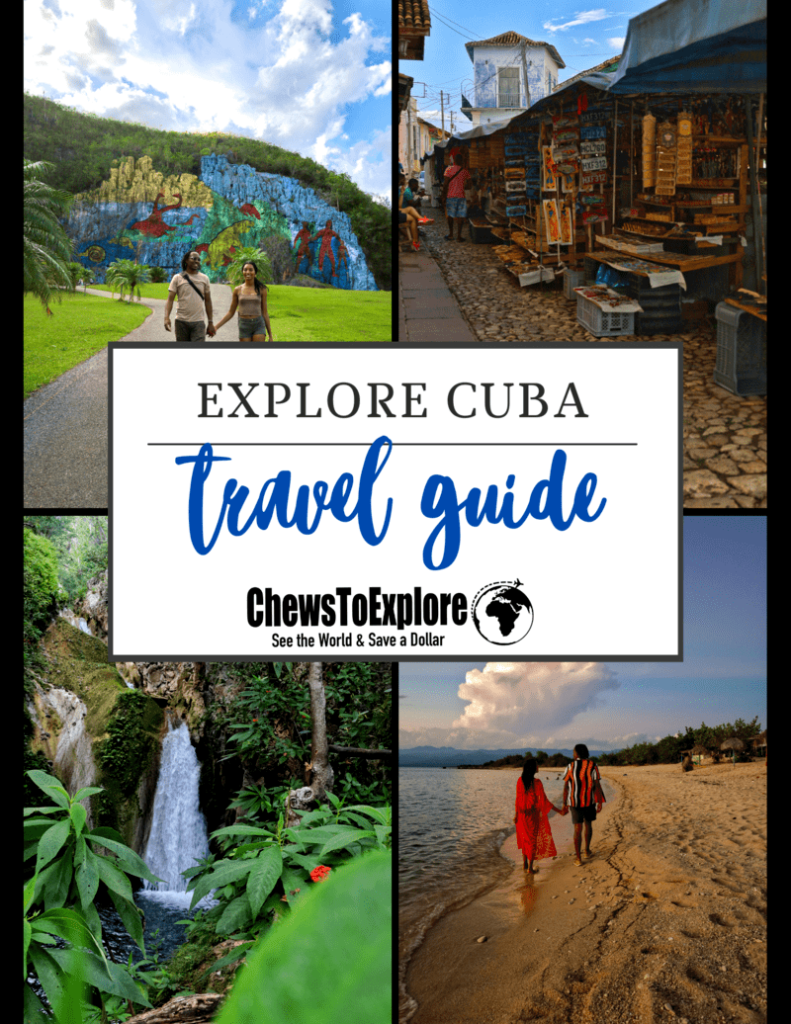
Are you considering traveling to Cuba, but unsure of where to start planning?
This 38-page digital guide breaks down every detail you need to know before exploring Cuba, even as an American.
Info on Havana, Trinidad, Viñales and Varadero are all included.
This one-of-a-kind travel guide is filled with first-hand experience and insider tips that will save you time planning your dream trip!
What's inside:
- How to get a visa
- What to pack
- How to access Wifi
- Private taxi driver numbers
- Over 20 unique things to do (many are FREE!)
- Over 30 top-rated places to eat
- Over 30 casa particular recommendations
- Sample 5-day itinerary through Cuba
Our recommendations are organized by budget, so as always, we'll help you "See the World, Save a Dollar!"

25 Best Cuba Travel Tips – Things to Know Before Visiting
- Updated on January 2, 2024
- Tips and Tricks

What You Will Learn (Click to Expand)
Introduction to traveling in cuba, the unique allure of cuba.
In a world that’s perpetually fast-paced and forever evolving, Cuba provides an intriguing break from the norm.
Occupying the throne as the largest island in the Caribbean sea (by land mass and population), it abounds with unparalleled charm – largely owing to its unique historical and political tapestry.
Quintessentially Cuban symbols like the vintage ’50s Cadillacs and rundown yet mesmerizing Spanish colonial architecture lend an irresistible allure to this island nation that paints the picture of a place frozen in time.
So here are my Top 25 Cuba Travel Tips.

1. Understanding The Local Culture
As with any travel destination, being respectful and understanding of the local culture in Cuba is key.
Cuban society is characterized by its warm hospitality, strong community bonds, and rhythmic vitality tied closely to music and dance.
Appreciating this rich cultural tapestry can make your trip a more rewarding and meaningful experience. It’s important to approach interactions with locals in a friendly and open-minded way.
From the enthusiastic dominoe games taking place on street corners to the animated discussions about baseball, the Cuban way of life is an immersive experience brimming with spirited conversations and engaging community culture.
Pre-Travel Essentials and Preparation
2. checking visa requirements ahead of your trip.

Traveling to Cuba requires travelers from many countries, including the US, to obtain a Cuban visa, also known as a tourist card.
This rule applies whether you’re entering the country as a tourist, on a business trip, or for family visits.
Visa requirements vary depending on your nationality. For instance, Canadians only need a tourist card typically provided by tour operators or airlines, whereas, for Americans, the situation is more complex due to certain US government restrictions.
Regardless of your nationality, it’s crucial to check and prepare for visa requirements well before your trip.
Use resources such as your local government website, your airline, or assistance websites to understand the specific visa requirements applicable to you.
Most travelers can usually purchase their Cuban visa at the check-in or departure gate of their flight to Cuba, although this process may vary.
It’s best to contact your nearest Cuban embassy if you need further clarification about Cuban visa requirements.
For visitors planning to stay up to two months in Cuba, a visa may not be necessary, but the specifics can depend considerably on your home country.
Always ensure you have a return or onward ticket, proof of sufficient funds to cover your stay, and documentation confirming your accommodation, especially if you are arriving with air-only tickets.
3. Packing Essentials for Cuba Travel

When you’re packing for a trip to Cuba, your list of essentials may differ from what you’d usually bring on other travels.
Given Cuba’s limited supplies due to its rationed economy, it’s vital to be prepared with items difficult to find or extremely expensive locally.
- First-Aid Kit: Packaging a compact but well-equipped kit with essentials like band-aids, antiseptic wipes, pain relievers, and any prescribed medication.
- Toiletries: While you should pack light, bring essentials like toothpaste, sunscreen, and insect repellent, as they can be expensive or hard to find.
- Portable Charger: Electricity is sometimes inconsistent in Cuba, so a portable charger can be a lifesaver for keeping your devices powered.
- Water Bottle With a Filter: Tap water may not always be safe to drink, so bring a refillable water bottle with a built-in filter.
- Food Items: Local stores may not have a wide variety of snacks, so bring any snack-related favorites or comfort foods from home.
- Misc Items: Remember to pack other necessities such as a Spanish-English phrasebook, travel guide, portable fan, microfiber towels, and a convenience kit.
- Adapters: For European travelers, don’t forget to pack a pin adapter, as Cuban power sockets accommodate US flat two or three-pin plugs.
Lastly, earplugs can be handy if dealing with street noise or lively local conversations during the night isn’t your idea of a peaceful vacation.
To sum it up, when it comes to packing for Cuba, it’s better to be over-prepared than under-prepared!
4. Must-Know Tips about Cuban Currency

One of the essential things to know when preparing for your Cuban adventure is understanding the currency situation.
The Cuban Peso (CUP) is the only currency currently in use in Cuba, with the Cuban Convertible Peso (CUC) being phased out as of January 2021.
As a predominantly cash-based economy, it’s important you always have cash on hand as very few establishments accept credit or debit cards.
Your cash should primarily be in smaller denominations for ease of transactions.
Although US dollars, Euros, and other foreign currencies are not generally accepted at state facilities such as hotels, airports, and restaurants, some private businesses do accept them.
So, to ensure a smooth experience, it’s best to exchange your currency for CUP at official currency exchange offices (CADECA), airports, banks, hotels, and resorts.
Remember that while Cuba is a safe country overall, as with any travel, sensible precautions to keep your cash secure are always recommended.
Also, note that ATMs can be sparse or non-functional in smaller townships and outside of standard banking hours at other locations, so it can be smart to withdraw enough cash early during your visit.
Finally, some all-inclusive hotels and resorts won’t accept cash for non-covered services or products. In such cases, you’ll need to pay with your credit card and take on the currency conversion fees.
Understanding the Cuban currency scenario and its associated challenges ahead of time can help ensure your journey is free from unnecessary financial stress.
Accommodation Tips For a Pleasant Stay
5. staying at locally-owned casas particulares.

Casas particulares, or private homes, are a unique and popular form of accommodation in Cuba, reminiscent of homestays or B&Bs.
This unique form of accommodation provides you with the phenomenal experience of living with local Cuban families, often in charming colonial houses, fostering direct interaction and cultural exchange.
Most casa particulares are authorized by the Cuban government, evidenced by a mandatory sticker with a blue anchor on their door. This indicates not only legitimacy but also safety for foreign visitors.
These establishments are owned and operated by private Cuban citizens who often live on the premises and are keen to make you feel as welcome as possible in their homes.
Staying in a casa particular offers the unique opportunity to observe Cuban life up close, including the chance to consume delicious home-cooked meals for an additional fee.
With both private and shared accommodation options available, casa particulares come in various sizes, from small 2-3 room establishments to larger ones with 5-7 rooms, catering to solo travelers, couples, and even larger family units.
As an alternative to the more conventional hotel experience, casa particulares are not only the best way to gain a more authentic Cuban experience but also go a long way in supporting local Cuban households directly.
Booking your initial casa particular online is suggested, with platforms like Airbnb offering many options.
However, for continued stays, you may get better rates by talking to the owners directly or using the network of your first casa particular host to find subsequent stays.
This not only allows for a more seamless trip, but you also get to interact more deeply with local families while supporting their businesses directly. A truly rewarding and culturally enriching experience indeed.
6. Pre-Booking Accommodation vs Spontaneous Booking
When considering whether to pre-book your accommodation or opt for on-the-spot booking upon arrival, both have their own advantages and considerations.
Cuba’s unique socio-political scenario and internet access restrictions can make online booking an appealing choice.
This ensures you have guaranteed accommodation waiting for you – a piece of information that might be necessary to show at airport customs upon arrival in Cuba.
However, the spontaneous approach offers its own charm. One-off, quirky casa particulares or last-minute deals at high-end resorts aren’t often listed online and require on-the-ground scouting.
Countless travelers have found hospitality and charm in stumbling across such hidden gems.
Additionally, casa particular owners usually own a network connecting various towns, which you can leverage to secure accommodations at your next destination.
This gives you a chance to discover local recommendations and enjoy an authentic Cuban experience.
Regardless of whether you choose advance booking or spontaneous exploration on arrival, ensure that the place is a legal rental by looking for the blue anchor sticker on the door authorizing it to house tourists and is, therefore, government-approved and safe.
In conclusion, you can use a hybrid approach to get the best of both worlds: pre-book accommodation for the first few nights of your stay or in high-demand areas and leave the rest of the trip open for spontaneous bookings based on local recommendations.
The experience can be more enriching, and who knows, you might end up discovering some of the best-kept secrets of Cuba.
Keep in mind that being flexible, having a healthy sense of adventure, and a basic proficiency in Spanish can make this process a lot smoother.
7. Safety Considerations for Your Stay

While Cuba is considered among the safest countries in Latin America for tourists, being alert and mindful of local conditions is crucial.
- Always secure your personal belongings. Cases of theft, pickpocketing, and purse snatching occur mainly in Old Havana, Trinidad, Santiago de Cuba, and Baracoa. Pay close attention to your belongings at all times, particularly in crowded areas and when using local public transport.
- Avoid isolated areas, especially at night. Stick to well-lit and populated areas, particularly if you’re a solo traveler or a woman traveling alone. As a general rule of thumb, never accept invitations to visit homes or remote areas unless they are licensed businesses (like casa particular or paladare).
- Fraudulent transactions are worth watching for. Be vigilant with currency exchanges on the street, which can sometimes involve counterfeit bills or confusing the two local currencies.
- The national resort areas of Cuba, such as Cayo Coco, Cayo Largo del Sur, Cayo Santa Maria, Guardalavaca, and Varadero, are generally safe and tend to experience fewer instances of crime. However, this should not lead to complacency on the part of travelers.
- Follow local news and stay updated with governmental travel advisories, as situations can change swiftly.
- Healthcare services may not be up to the standard you are used to. Thus, it is advisable to pack a comprehensive travel health kit and get health insurance that covers medical evacuation.
It’s important to note that personal safety is a subjective matter and can vary greatly based on individual experiences and circumstances.
However, by taking caution and employing common sense alongside these general-key safety guidelines, you can ensure that your experience of Cuba is both safe and enchantingly memorable.
Navigating through Cuba
8. utilizing shared taxis for smooth travel.

One highlight of Cuba’s transportation system is its fleet of shared taxis or colectivos – a convenient, cost-effective, and remarkably authentic way of getting around Cuban cities.
Colectivos are often classic American cars from the 50s and 60s, adding a nostalgic charm to your travel experience.
They generally have a fixed route and are shared with other patrons, creating a vibrant ride filled with local conversations – a unique way to absorb Cuba’s upbeat spirit.
Despite the inherent old-world charm, do note that these vehicles often lack modern comfort features, making long journeys a bit uncomfortable.
However, for shorter trips around the city, they are an authentic and economical choice.
Bookings can be made on the street or through your casa particular. It’s customary to negotiate the fare before you start your ride because the first quote usually starts high. However, remember that while negotiating is a part of the Cuban culture, a fair price isn’t always the cheapest one.
A typical colectivo trip is quite efficient as Cuban highways aren’t very congested.
They offer point-to-point convenience, picking you up from your casa particular (or a designated common point) and dropping you off at your destination.
While shared taxis may appear confusing to first-time travelers, they’re a remarkable blend of convenience, practicality, and cultural immersion, making them one of the best ways to travel around Cuba.
These taxis play a significant role in shaping your authentic Cuban experience.
Remember: Colectivos are just one of the many options to commute in Cuba. Evaluate your preferences, timings, and comfort levels to choose the best commuting option for you.
Regardless of your choice, colectivos surely add a charmingly Cuban flavor to your commute experiences in Cuba.
If you like exploring, here is a Complete List of the Best Beaches in Cuba .
9. Deciphering the complex Bus Routes in Cuba

Traversing Cuba by bus is an economical and practical way to experience the country.
Viazul, Cuba’s state-run intercity bus service, is the most reliable and widely used by foreigners for its comparatively comfortable and clean buses, albeit slower due to frequent stops.
The Viazul website provides detailed information about their bus routes, time schedules, and fares for planning your trip.
Make sure to note down all the details as the website may be inaccessible during your trip due to spotty internet access throughout Cuba.
Viazul bus tickets must be purchased at the bus station a couple of days in advance, which might take up a chunk of your time as the queues are long and slow-moving.
Booking in advance is crucial as buses tend to sell out quickly, especially during the peak season.
There’s an option of a second bus service, called Conectando, run by Cubanacán, that also operates along popular routes during the peak season.
Bus journeys in Cuba can be long, and the air-conditioning is notoriously cold, so it’s smart to bring a sweater or jacket.
Another thing to be prepared for is the likelihood of people approaching you with various offers, especially if you are traveling solo.
Understanding local bus routes in Cuba can be challenging, especially for first-time visitors, due to unreliable public transportation and the thick Cuban accent that can make communication difficult, even for Spanish-speakers.
However, with a bit of homework and patience, you can navigate the Cuban bus system effectively.
Alternatively, the more budget-friendly and flexible option could be shared taxis (colectivos), depending on your travel style and preferences.
Remember, despite the challenges, navigating the local bus network can offer unique insights into the local ambiance and people’s lives.
It’s an experience that adds depth to the diversity of your Cuban adventure.
Here are all the Most Epic Things to Do in Cuba .
10. Know the Pros and Cons of Renting a Car
Before deciding to rent a car in Cuba, it’s essential to weigh the pros and cons. Indeed, having a vehicle at your disposal can provide you the freedom to explore the island at your own pace.
However, several challenging issues might arise. The number of available cars for rent is often limited, especially during the peak season, making it necessary to book at least three months in advance through travel agencies such as Cuba Travel Network or Holiplus.
Besides, the roads in Cuba are not often well-marked, and some are in disrepair. Gas is pricey and not conveniently accessible everywhere.
Plus, if the car breaks down, repair options are not readily accessible.
Considering these cons, many travelers recommend other local transportation options over renting a car.
Hair Tools Travel Bag
Cultural etiquette and social norms, 11. how to respectfully address locals.
When it comes to addressing locals in Cuba, it’s key to respect their customs and preferences.
Most Cubans use the informal “tu” form of address instead of “busted”. If you’re unsure or meeting someone for the first time, it’s safer to call them señor or señora.
Cubans are also known for their friendly colloquial terms like socio (partner), hermano (brother), papa (guy), chica/o (girl/boy), and asere (friend).
However, use these terms, especially asere , judiciously as they have regional contexts and connotations.
For most tourists, general Spanish greetings like hola (hello), buenos días (good morning), or buenas tardes (good evening) can suffice and are less likely to cause misunderstandings.
12. Basic Spanish Phrases for Easier Communication

Cuba’s official language is Spanish, and while many in the tourism sector speak English, mastering a handful of Spanish phrases can go a long way, enhancing your travel experience.
Here are some useful phrases:
- “Por favor” (Please)
- “Gracias” (Thank you)
- “¿Cuánto cuesta?” (How much is it?)
- “Está bien” (It’s OK)
- “Me gustaría…” (I would like…)
Also, familiarize yourself with numbers and common food items. Websites like Duolingo and apps like Memrise can be handy tools in learning basic Spanish.
We advise travelers to download Spanish in Google Translate before leaving for Cuba for instances when an Internet connection is unavailable.
Carrying a Spanish-English phrasebook specializing in Cuban dialects can also be beneficial.
13. Discussing Politics - A Topic to Avoid

Cuba’s political landscape can be a sensitive issue for many locals.
Though some might express their political views openly, others – particularly state employees such as tour guides and hotel staff – might hesitate to take part in such discussions.
The potentially heated subject of Cuba’s politics, coupled with a culture of being secretive and cautious when talking openly about the regime (even when chatting informally with tourists), makes this topic one best to avoid.
If you’re curious about Cuban politics, it’s better to research from independent sources rather than putting locals at discomfort.
Should you find yourself in the midst of a political conversation, be understanding and try to steer the topic towards something less contentious.
Remember, you’re a guest in their country, and respecting their cultural norms, including their political sensitivities, is a crucial part of responsible traveling.
Above all, under no circumstances should you participate in political demonstrations as this is not only disrespectful, it is also considered illegal by local authorities.
Health and Safety Measures in Cuba
14. bring your own medicines and essential health products.

While Cuba has a good reputation in the field of medicine, it suffers from severe shortages of basic medicines.
Thus, if you take prescription medications, it’s crucial to bring enough to last throughout your stay.
To avoid complications at customs, keep your medication in its original container and carry a paper and electronic copy of your prescriptions.
In addition to prescribed medication, consider bringing over-the-counter medicinal products such as paracetamol, ibuprofen, or antibiotics, as they may be hard to find.
Same with other health essentials like sunscreen, insect repellant, antiseptic wipes, and feminine hygiene products. These items are either very difficult to obtain or non-existent in Cuba.
Also, pack a basic first-aid kit that includes bandages, aspirin, anti-diarrhea meds, and bismuth.
15. The Importance of Travel & Medical Insurance

In line with the Cuban government’s regulations, it’s mandated for all international travelers to have travel insurance with medical cover before entering the country.
Proof of insurance coverage may be required upon arrival, failure of which may result in the need to purchase a policy from the Cuban insurance company Asistur at the airport.
Also, as your home insurance might not extend coverage to Cuba, ensure that you have a policy that particularly covers you for visits to Cuba.
Ensure it includes comprehensive overseas medical cost coverage, including medical evacuation, as these can skyrocket rapidly in emergency cases.
Travel insurance will also guard against trip cancellation, delays, lost luggage, and other contingencies, providing peace of mind throughout your journey.
Keep in mind, if you can’t afford travel insurance, you can’t afford to travel, a rule that applies to all irrespective of their health or fitness levels.
If you’re unsure which policy to choose for a reliable travel insurance provider, check out SafetyWing .
16. Food Safety Precautions to Ensure Healthy Travels

Traveling to Cuba opens a world of unique culinary delights to explore, but potential foodborne illnesses may turn your experience sour if you’re not careful.
Many illnesses, including travelers’ diarrhea, typhoid, and salmonellosis, can follow from consuming contaminated food or water.
Here are some tips to ensure a healthy trip:
- Practice safe food and water precautions: Opt for food that is properly cooked and still hot when served. Avoid undercooked or raw food, including fruits and vegetables, unless they’re peeled.
- Consume bottled water: Tap water might contain bacteria or viruses. So, it’s best to purchase bottled water when possible. Remember the rule: “Boil it, cook it, peel it, or leave it!”
- Avoid street food: Street food in Cuba might expose you to contaminated or undercooked foods, leading to diarrhea or other illnesses. If you do try street food, ensure it’s well-cooked and served hot.
- Pack rehydration salts: Travellers’ diarrhea is the most common sickness affecting travelers. The most important treatment is rehydration, so it’s wise to carry oral rehydration salts.
Remember, if you fall sick, seek medical assistance immediately.
Savoring the Cuban Cuisine
17. dining at paladares - private restaurants.

Cuba’s restaurant scene has bloomed in the past few years, chiefly due to the emergence of paladares, privately owned restaurants often based in family homes.
These paladares offer a vibrant alternative to state-run restaurants, serving up not only authentic Cuban cuisine but also a unique travel experience.
Most paladares offer a menu range from homely, hearty Cuban dishes to gourmet meals creatively blending Cuban and international influences.
Here, you can expect to find plates loaded with chicken, pork, fresh seafood, and sometimes lobster, albeit overfishing concerns may deter some from ordering this option.
As beef is somewhat scarce and expensive in Cuba, it’s not commonly found in menus.
- One standout paladar is ‘ El Cocinero ‘, set in a converted cooking oil factory adjoining an art gallery.
- Another one to visit is ‘ San Cristobal ‘, where Obama famously dined during his visit.
- You should also plan to drop by ‘ Dona Eutimia ‘, tucked away in a tiny alley off the Plaza de la Cathedral.
Booking reservations weeks in advance is recommended as sought-after paladares fill up fast.
18. Tipping Etiquette at Cuban Restaurants

While tipping is not mandatory in Cuba, it’s a significant part of the local culture and can supplement the often low wages earned by servers.
If a service charge isn’t added in the restaurants in the cities, then a 10% gratuity is standard.
Yet the service quality in Cuba varies enormously, with the propensity to tip depending on personal experience and satisfaction with the service.
For excellent service, it’s common for tourists to tip more generously. It’s also frequent for Cubans to leave small loose change, demonstrating that tipping is not an obligatory practice restricted to visitors.
Interestingly, a significant element of Cuban culture associated with tipping is tipping for restrooms.
Most public restrooms have an attendant collecting small change to access the facility, generally a very tiny fee, yet a must-know part of Cuban travel etiquette.
Note, it’s also advisable always to carry coins to tip local staff like waiters and taxi drivers, as they often rely on tips to boost their income.
In the poorer country of Cuba, tips can stretch a long way in helping the people.
A piece of practical advice is to be mindful of the exchange rate before deciding on the tip. A seemingly small amount could convert to a generous tip in the local currency.
Remember, being generous while observing local customs associated with tipping can add on to your cultural immersion and travel experience in Cuba.
19. Street Foods – To Eat or Not to Eat?

Navigating Cuba’s street food scene can be exciting but challenging for two reasons – the risk of food-borne illnesses and the penchant for rich, fatty food.
That said, many street vendors offer scrumptious delights that can be savored if approached cautiously.
- Firstly, prioritize freshly cooked hot food over cold or reheated ones, which can harbor harmful bacteria. Steaming hot churros, empanadas, and pizzas are common street food options that fall into this category.
- Secondly, avoid raw seafood like ceviche, which might contain harmful bacteria or, in some cases, toxins. Some local fish from Cuba’s southern shore may have poisonous substances (siguato) as they feed on toxic sea vegetation.
- Thirdly, opt for recognized street vendors over unregulated ones to ensure the quality and handling of food.
- Finally, always wash hands before eating or carry hand sanitizers for times when water and soap aren’t readily available.
Having these measures in place will allow you to indulge in a slice of Cuban street food culture without compromising your health.
Responsible Budgeting and Spending
20. managing your daily budget in cuba.

Cuba, for a visitor, doesn’t come cheap. From accommodations to transportation, prices often equal or exceed those in the US, Europe, or Canada.
This factor makes budgeting a crucial part of planning any trip to Cuba.
Based on research, a rule of thumb is to plan for around $150 – $300 per person per day. This figure, albeit generous, allows a cushion for unexpected expenses like last-minute tours or souvenirs.
It might seem a lot, but prices for foreigners are unusually high due to Cuba’s dual currency system.
This budget should ideally cover:
- Accommodation: Castro-style rentals or Casa Particulares can range from $40 to $100 per night for a private room.
- Food: Dining at Paladares, private home/restaurants can range from $7 to $15 per meal. Remember, meals at high-end restaurants or hotels can easily exceed $30.
- Transportation: Taxis in Havana start at $5, with a half-hour ride costing around $40. Most taxi drivers don’t own their cars; they rent them from the state, which makes cab fares rather pricey.
- Attractions: Most museums and attractions charge entrance fees of $10.
- Other: Emergency expenses, souvenirs, tips, or unexpected costs.
The key to managing your daily budget in Cuba is cash flow. Bring a mixture of small and large bill denominations for ease of spending and to tackle possible scarcity of change.
Remember, your bank cards might not work in Cuba. Thus, bring enough cash to last your entire trip, keeping safety measures in place.
21. Supporting Local Businesses Responsibly

One of the most fulfilling aspects of travel is the opportunity to support local businesses and contribute to the local economy.
In Cuba, this could mean choosing to stay in a ‘casa particular’ (private house) instead of a hotel, dining at paladares (private restaurants), or purchasing handcrafted souvenirs from local artisans.
Try to use local services as much as possible. For example, take dance classes, hire local guides for your excursions, or attend performances by local musicians and artists.
These interactions not only support local livelihoods but also foster cultural exchange and understanding.
Shopping in the Rodríguez Fuster Gallery, where you can buy unique, colorful art pieces, or visiting the San Jose crafts market for souvenirs helps support local craftspeople.
Remember to respect fair-trade practices by not engaging in bartering or haggling too forcefully, as it undermines the living wages of these entrepreneurs.
Ensuring your economic impact goes directly to the people who need it most contributes to responsible and sustainable tourism.
22. Avoid Illegitimate Vendors to Protect Your Finances
While supporting local businesses is encouraged, it’s critical to be aware of potential scams and illegitimate vendors.
Whether it’s currency exchange, souvenirs, or even cigars, engaging with unlicensed traders can lead to exorbitant prices, counterfeit goods, and other fraudulent activities.
The allure of getting a good deal on Cuban cigars might entice you, but purchasing from street vendors will likely result in buying counterfeit goods.
Instead, it’s recommended to buy cigars from official shops, such as Havana’s Casa del Habano , to ensure their authenticity, quality, and legal transaction.
When looking to exchange currency, avoid dealing with unlicensed traders on the streets. They may offer tempting rates but often result in forged notes scams.
Stick to official money exchange counters (CADECAs), hotels, or banks to avoid such risks. Remember to check the coins and notes handed back to you after every transaction.
Hiring services like tour guides and taxis should also be done through reputable sources.
Independent street vendors may offer low prices, but these services are often unregulated and can lead to overcharging or personal safety risks.
Being aware and cautious about illicit vendors is key to protecting your finances and ensuring a hassle-free travel experience in Cuba.
Additional Practical Tips
23. coping with limited internet access in cuba.

As a visitor, you should know that Internet access in Cuba is not as readily available or as speedy as you might be used to.
Cuba is among the world’s least connected countries, with limited places offering Internet connectivity, and even then, the available connection speed is usually slow.
State-run telecom company ETECSA offers Wi-Fi spot access via scratch-off cards that provide an hour of service each.
These cards cost about $1.50 each and can be bought at ETECSA offices or kiosks around cities and towns. But note that long queues and limited supply might make the process a bit tiresome.
Given the spotty Internet coverage, it’s recommended that you download map data, travel tips, and any crucial information beforehand. Offline apps like Maps.Me can be handy for navigating the place without Internet.
Consider your time in Cuba as an opportunity to unplug, enjoy the local culture, scenery, and embrace the ‘unwired’ experience.
Also, Cuban Internet does not allow the ability to connect to servers outside of the country, meaning Voice over Internet Protocol (VoIP) and video calls will not work.
24. How to Get Wi-Fi in Cuba
Given the state-controlled internet landscape in Cuba, gaining online access may seem like a daunting task.
However, here are three primary options for connecting to the internet:
- Purchase a NAUTA Card: The most common option by which Cubans access the internet. Purchase a card from ETECSA outlets (the state-owned telecommunications provider) or in hotels, which allows access at one of the many Wi-Fi hotspots, typically located in public parks or plazas.
- Stay at a Tourist-Oriented Hotel: Some upscale hotels and resorts offer internet access and even sell internet cards to guests. However, prices can go up to 10 CUC for an hour’s use. Also, remember to check whether a hotel offers internet before making a reservation.
- Purchase International Roaming Data: This option is pricey but the most convenient. Major carriers like AT&T and T-Mobile offer roaming coverage in Cuba. Just be sure to turn on your roaming data and purchase a roaming package before arriving in Cuba.
To align with ETECSA’s pricing, rates have fallen to about $1 per hour. But keep in mind, the connectivity remains mostly slow and crowded.
25. Dress Code and Packing Clothes for Cuban Weather
Wondering what to bring to Cuba? Dressing patterns in Cuba usually align with the weather, with lightweight, breathable clothes being ideal for Cuba’s tropical climate.
Here are some recommended clothes to pack for both men and women:
- Light summer dresses (for women) or T-shirts (for men)
- Skirts (for women) or Shorts (for men)
- Sneakers & Walking sandals
This list keeps you confident and comfortable despite the hot and humid weather.
Also, keep in mind to pack an umbrella or light poncho for summer months, when brief but intense showers are common.
Cuban dress code is casual, but they value neatness, clean attire, and sophisticated style. So for evening activities, at restaurants or cultural venues, men should wear long trousers and shirts with sleeves, while women can opt for simple dresses.
Lastly, consider packing essential personal hygiene products, as they are challenging to find in Cuba. These essentials include sunscreen, deodorants, and feminine hygiene products.
To help on your next trip, here is my Complete Cuba Packing List .
Frequently Asked Questions about Cuba
Is travel to cuba allowed right now.

Yes, Cuba is currently open for travel.
However, the entry requirements vary depending on your nationality, and it’s advisable to review the latest travel advisory.
For American citizens, direct tourism to Cuba is technically illegal, but travels can be legally done under any of the twelve categories authorized by the U.S. Department of Treasury, including family visits, journalistic activities, or religious activities.
Visitors should consult with their travel agencies or embassies and must present a Tourist Card and visa upon arrival in Cuba.
Last-minute changes are common, so always check the current situation before finalizing your travel.
What are some must-try Cuban dishes?
Cuban cuisine offers a blend of Spanish, African, and other Caribbean cuisines.
Here are some traditional dishes you should savor during your visit:
- Ropa Vieja: A shredded beef dish slow-cooked with tomatoes, onions, bell peppers, and a blend of spices.
- Tostones: Twice-fried plantain slices served as a snack or side dish.
- Arroz con Pollo: A one-pot chicken and rice dish typically cooked with beer, wine, or saffron.
- Lechon Asado: Traditional slow-roasted pork, usually marinated in a mixture known as Mojo Criollo.
- Moros y Cristianos: A comforting and filling dish of black beans and rice.
- Picadillo a la Habanera: A ground beef hash served with raisins and olives over white rice.
Cuban sandwiches and breakfasts featuring eggs, bread, tropical fruits, and aromatic coffee are also worth trying.
Don’t miss out on the chance to try these flavorsome dishes when you visit Cuba.
Can I use my credit card in Cuba?

Yes, you can use credit cards in Cuba, but it’s important to factor in certain limitations.
Most internationally-issued cards, except those linked to American banks, are accepted. However, due to sanctions, credit cards issued by US banks cannot be used.
Therefore, visitors who only have cards issued by American banks should bring enough cash for the entire trip.
Credit cards might attract commission fees and can be used mainly in state-run businesses, while only a few private businesses accept cards.
Note that due to an inflation crisis currently affecting Cuba, it’s advisable to bring a sizable amount of cash.
Also, keep Euros along with USD, as USD transactions incur a hefty 13% transaction fee.
Made by travelers, for travelers, check out the Barefoot Caribou Products below!
Conclusion: Cuba Travel Tips
In conclusion, Cuba is a captivating travel destination with its unique allure, rich culture, and delicious cuisine. Before visiting Cuba, it is essential to prepare and equip yourself with the right knowledge and resources.
Here are some key takeaways from our discussion on Cuba travel tips:
- Understand the local culture and embrace the traditions and social norms of the Cuban people.
- Check the visa requirements ahead of your trip and ensure you have the necessary documentation.
- Pack essentials for Cuba travel, including clothing suitable for the Cuban weather and any necessary medications and health products.
- Familiarize yourself with the local currency and know the best ways to exchange money in Cuba.
- Consider staying at locally-owned casas particulares to experience Cuban hospitality and support local entrepreneurs.
- Try must-try Cuban dishes like Ropa Vieja, Lechón Asado, and Cuban sandwiches to savor the flavors of the local cuisine.
Remember, each traveler’s experience in Cuba will be unique, and it’s important to approach your journey with an open mind and embrace the vibrant culture and beauty of the country.
By following these travel tips, you can make the most of your trip and create lasting memories in this enchanting Caribbean destination. Enjoy your time in Cuba!
And if I missed anything, let me know in the comments below!

Other Posts You Will Like

9 Top Pet Friendly Hotels in Orlando, FL: Your Dog’s Favorite Stay

The Ultimate US Virgin Islands Packing List for your Next Trip in 2024

The 21 Best Places to Visit in Thailand in 2024: A Comprehensive Travel Guide

The 9 Best All-Inclusive Resorts in the Caribbean: 2024 Complete List

The 17 Best Things to Do in Koh Samui (Thailand) in 2024

Explore the 15 Best Museums in Key West: Top Picks for 2024!
Leave a comment cancel reply.
Your email address will not be published. Required fields are marked *
Save my name, email, and website in this browser for the next time I comment.
Get Exclusive Travel Tips
Receive the same tips we use to make traveling easy and fun and special coupons and promotions..
*We respect your privacy and Do Not Spam.
Please share this article
Get the Packing eBook for Free
The Universal Packing List 2.0 is our most comprehensive cheklist, so you never forget a thing when you travel.
Your eBook will be delivered to your email address. Please also check the Spam folder.

A Guide to Cuba Travel
Here's everything you need to know about traveling to Cuba in 2019.
Traveling between Cuba and the United States isn't as simple as buying a ticket and showing up. Legal travel to the island still requires careful planning, and we're here to help with every step of the process, from visa applications to crafting an itinerary that captures all the rich sounds, flavors, and colors of the island, from Havana to Cienfuegos and beyond.
- WEATHER ALERT Heat Advisory Full Story
- WEATHER ALERT Excessive Heat Watch Full Story
- one tank trips
Crystal Cave in Kutztown lets you travel 175 feet below the Earth | One Tank Trips

KUTZTOWN, Pennsylvania (WPVI) -- In this edition of One Tank Trips , we're exploring one of Pennsylvania's greatest natural wonders.
Crystal Cave first opened in 1871.
Today, visitors can go 175 feet below the Earth to explore something that looks like it's from another world.
Crystal Cave is located in Kutztown , less than an hour and a half from Philadelphia.
Action News photojournalist Tom Kretschmer has more.
Related Topics
- KUTZTOWN BOROUGH
- PENNSYLVANIA
- ONE TANK TRIPS
- FAMILY & PARENTING
One Tank Trips

Kids can find their next outdoor adventure at Hellerick's Family Farm

A wooded wonderland awaits at the Mt. Cuba Center in Delaware

Matchbox Road Museum brings out the kid in all of us

South Jersey farm lets visitors hug a cow named Moo
Top stories.

North Philly shooting injures 7 people, including teenager
- 43 minutes ago

4-year-old Phillies fan rings bell after 25-week cancer battle
- 28 minutes ago

AccuWeather: Peak of the heat arrives later this week

NJ Gov. Murphy launches historic clemency program at Juneteenth event
- 3 hours ago

Warning about 'crash for cash' scam | What you should know
- 12 minutes ago
Woman killed after car crashes into tree along the Roosevelt Blvd.
Building destroyed in Delaware golf course fire
Ariz. man arrested in connection with 2 knifepoint robberies in Montco

IMAGES
VIDEO
COMMENTS
Cuba - Enjoy old-world architecture, famous cigars and classic cars in this long-isolated island nation. Check out Cuba's top sights for travelers. When read...
Embark on a visual odyssey through the lively streets and rich history of Cuba. Our 4K travel video captures the essence of this Caribbean gem, showcasing th...
TRAVEL CUBAMY FAVORITE FILMMAKING GEAR | http://bit.ly/WcuKitsCuba travel video shot during a week in Havana and the surrounding areas of Cuba. This was our ...
Travel Talks: Rick Steves' Guide to Cuba. In this travel lecture, Rick Steves describes his experience traveling through Cuba as the US began easing decades of travel restrictions for American tourists. Expand your travel horizons and learn about the time-passed elegance of Havana, Cuba's classic American cars, fine $5 rum, the best Cuban ...
If you're looking to travel to Cuba with kids, you'll find music, carnivals, watersports, horse riding, classic American car rides and much more. Read article. Best Road Trips. From beaches to mountains to historic cities and more, these road trips around Cuba offer access to the best of this enchanting island.
Cuba and the pandemic. In the global battle to mitigate coronavirus, Cuba has emerged as the New Zealand of the Americas: the country currently has the lowest death rate (per million inhabitants) in Latin America. In a nominally socialist country, state control and central planning has helped stem the flow.
Greatest Waterfalls in Cuba. Imagine finding yourself in Cuba, surrounded by an exuberant natural environment - where the vivacious green mountains stretch out into a splendid blue sky - while the fresh Caribbean seabreeze brightens your face. And on this tropical voyage, you discover a land of waterfalls on every corner of the island.
Highlight. Because Cuba is a warm tropical climate, there's not necessarily a right or wrong time to visit. However, the country does experience two distinct dry and wet seasons. The dry season runs from December to May, where you can expect sunny days with no trace of clouds in the sky, while the wet season runs from June through November.
Cuba Budget Travel Guide 2021. What draws people to the tropical Caribbean island of Cuba is much more than beaches and antique 1950's cars, although there are plenty of those! In Cuba, you can wander bustling city streets, go hiking in the mountains, learn about the history of tobacco, or simply soak up the country's 1950's time-warp appeal.
2. Fill out your passenger information in advance. Cuba uses an online form called D'Viajeros to gather traveler information, including immigration and health data, in advance of travel. Fill out the form digitally up to 72 hours before your arrival in Cuba. 3.
In this video, we will talk about some handpicked places to visit in Cuba, so let's jump into the Top 10 places to visit in Cuba. Travel Hack To book CHEAPES...
Getting WiFi in Cuba. If a travel guide says there are only one-hour WiFi cards, it is outdated. Now, you can access WiFi on a one-hour or a five-hour card. WiFi is now cheaper in Cuba—it was $5 USD per hour; now, it's $1 USD per hour. We only needed one 5-hour card per person for the whole week.
Your ultimate Cuba travel guide, with tips, things to do, and best things to see in Cuba. Great for first-time and returning travelers. Located on the largest island of the Caribbean, Cuba is a very popular tourist destination and for good reason. Cuba is home to beautiful white-sand beaches, impressive rainforests and waterfalls, vibrant ...
How to Spend Two Weeks in Cuba. Our Cuba itinerary starts with 3 nights in Havana, then heads out to cigar country in Viñales for a 3-night stay. We then spend 2 nights in Cienfuegos, 2 nights in Trinidad, and take time out with a 3-night beach retreat at Varadero.
Chances are that you'll upload a few your own videos when you get back from Cuba! 1. Madonna Celebrating a Birthday in Havana. The recently renewed friendly relations between the US and Cuba are well captured in this video. A certain American Material Girl celebrated her birthday in Havana. While she might be great on stage Madonna has a very ...
Live music, cocktails mixed with Cuba's best rum, and incredible art installations in public spaces are just a few of the can't miss things to see and do in the capital city, Havana. Check out ...
We have carefully curated a wealth of itinerary ideas tailored to major destinations throughout Havana, Trinidad, Vinales and Varadero in our comprehensive 31-page " Explore Cuba Travel Guide .". Dive into over 80 insightful suggestions covering everything from must-visit attractions to hidden gems.
Travel video about destination Cuba.Basking in the Caribbean sun, the island of Cuba lies between sun and socialism, rumba and revolution. Havana is the capi...
So here are my Top 25 Cuba Travel Tips. 1. Understanding The Local Culture. As with any travel destination, being respectful and understanding of the local culture in Cuba is key. Cuban society is characterized by its warm hospitality, strong community bonds, and rhythmic vitality tied closely to music and dance.
Here's everything you need to know about traveling to Cuba in 2019. Traveling between Cuba and the United States isn't as simple as buying a ticket and showing up. Legal travel to the island still ...
There have been some major changes since that pandemic in Cuba that you need to know before your next trip.Last video on what you need to Know Before Travell...
Cuba's lack of Wi-Fi and mobile data means your tablet or smart phone won't really work here. 5. Bring cash for the entire trip. Cuba is mostly a cash-only economy. While major credit card ...
This is me (dutch guy)Instagram: https://www.instagram.com/jarahsimons Thanks for watching my cinematic travel video of Cuba! If you have any questions o...
Crystal Cave first opened in 1871. Today, visitors can go 175 feet below the Earth to explore something that looks like it's from another world.